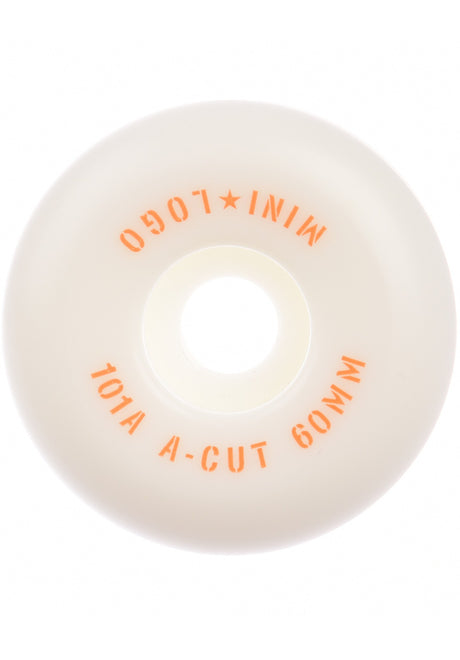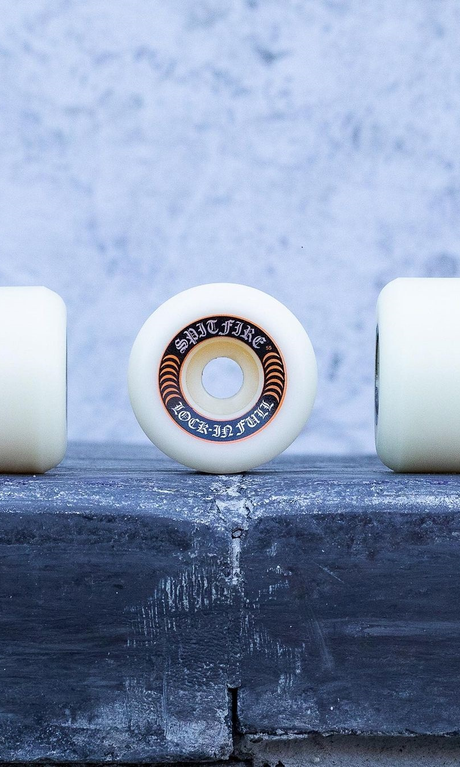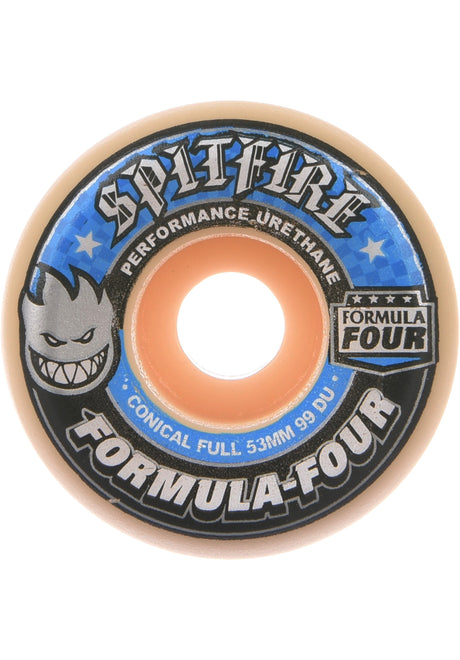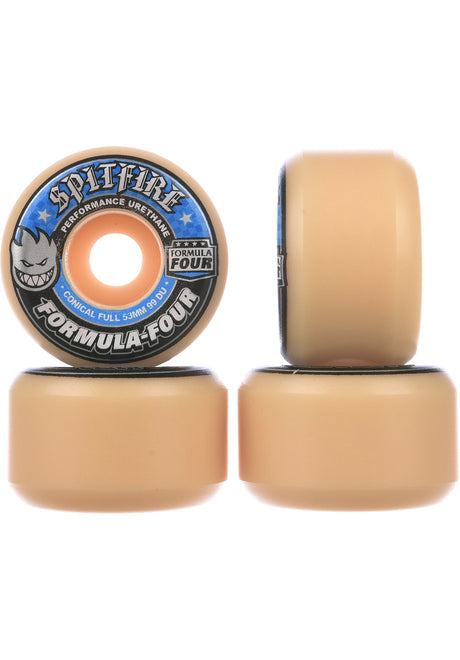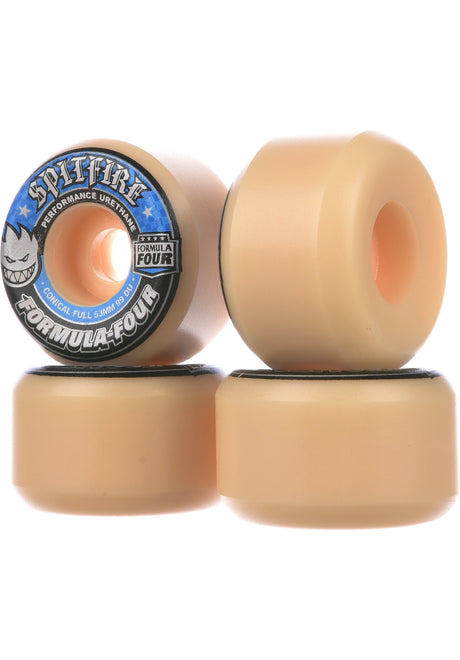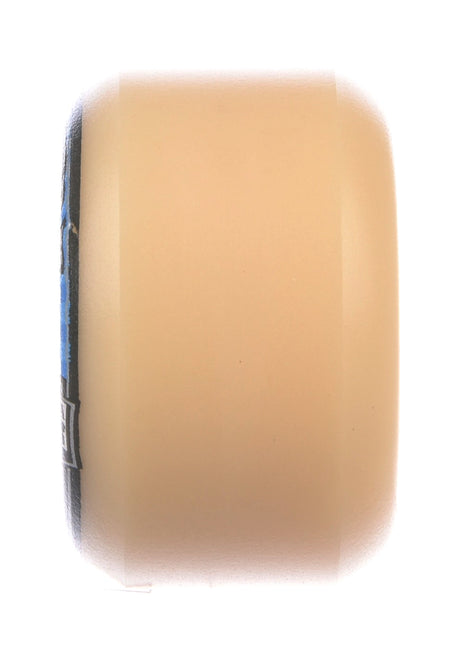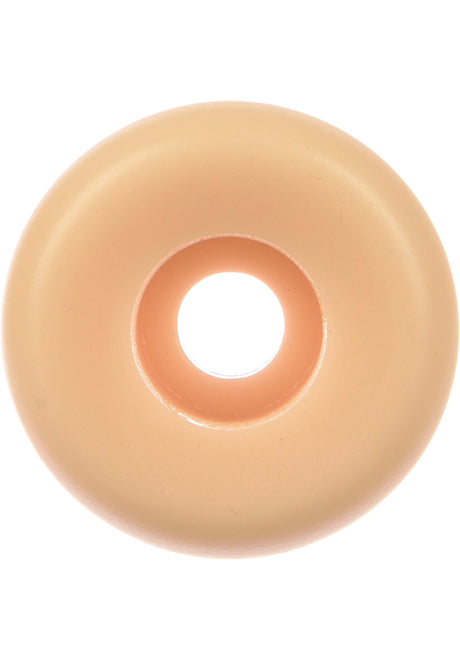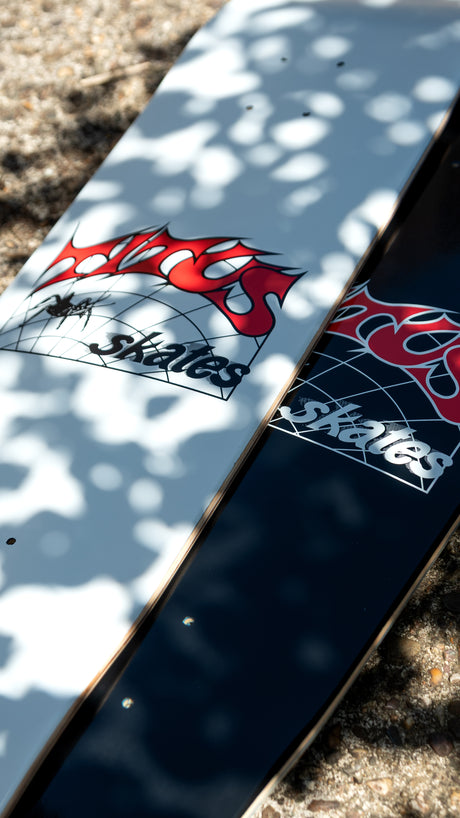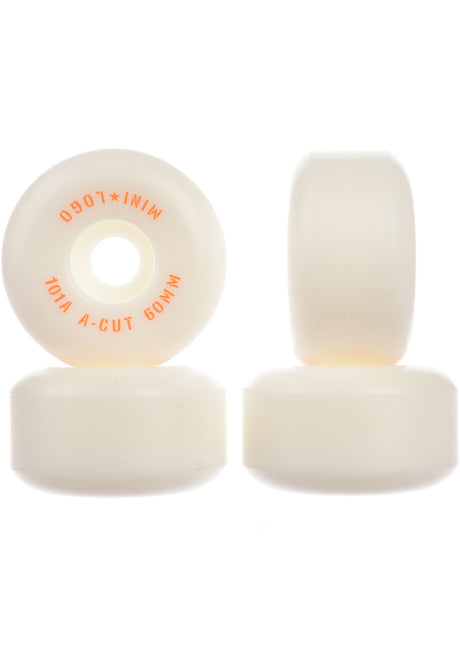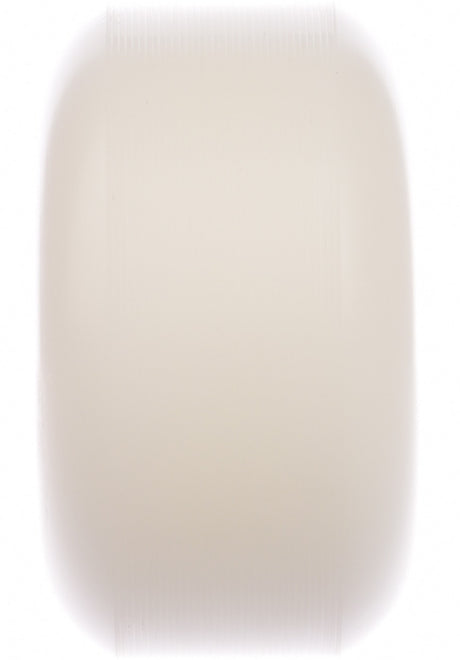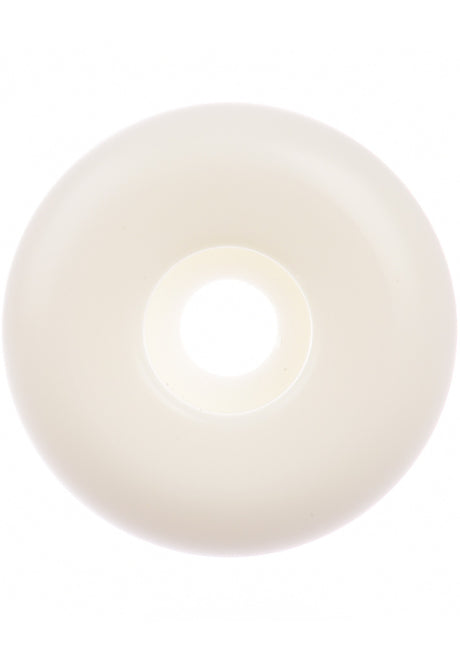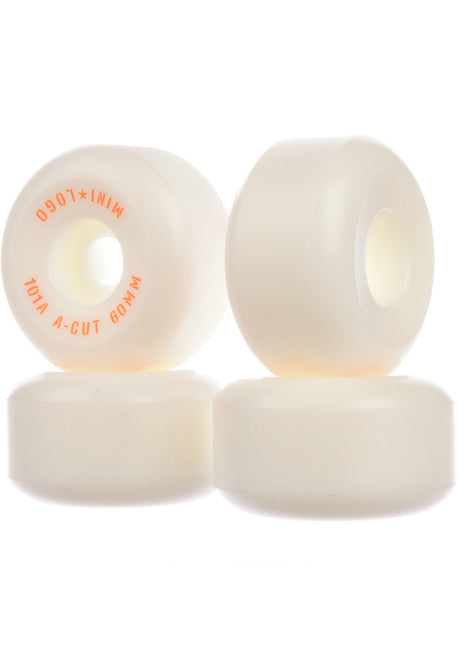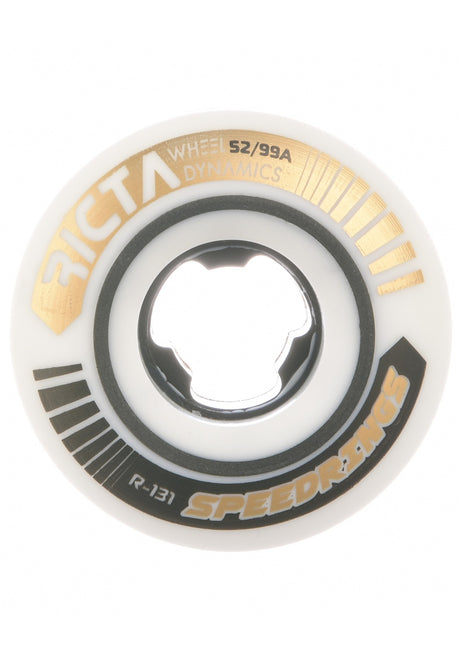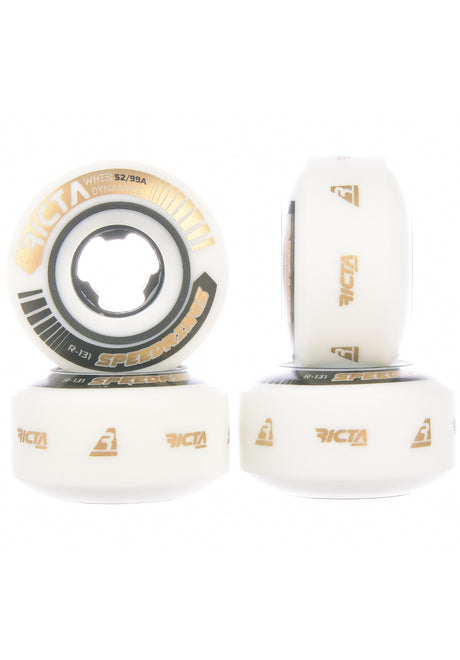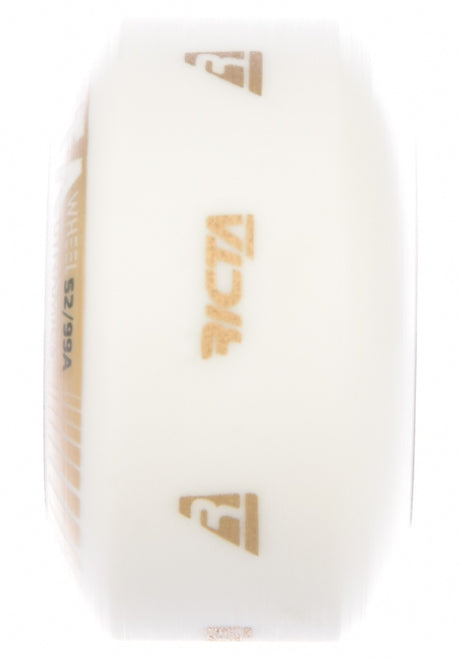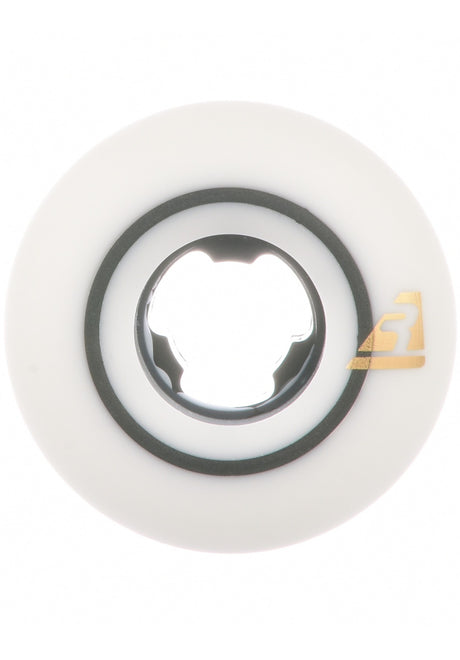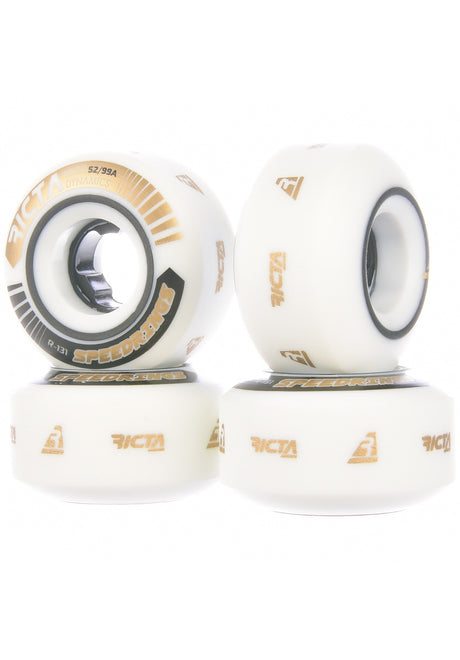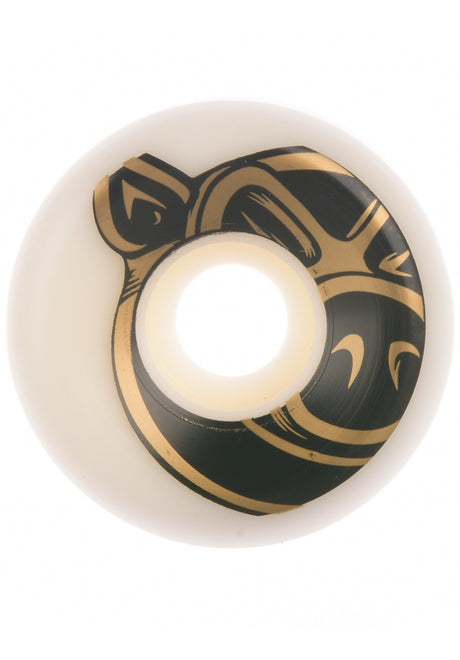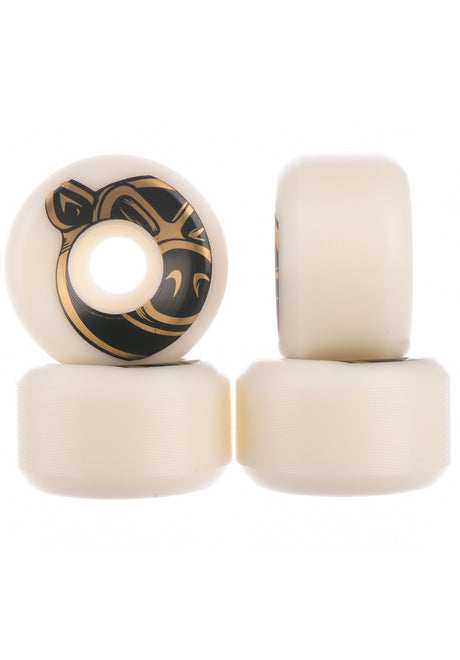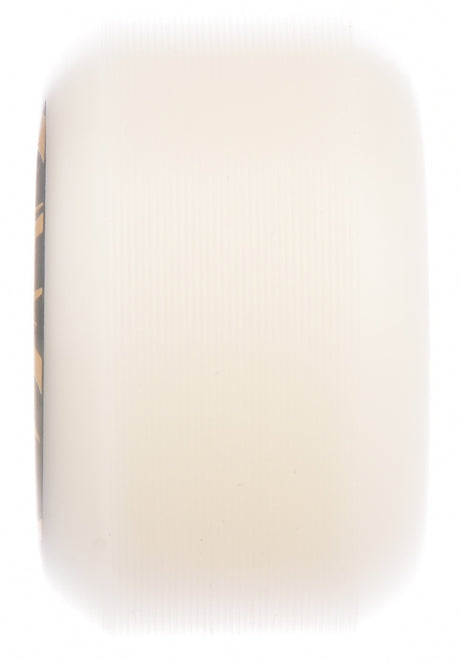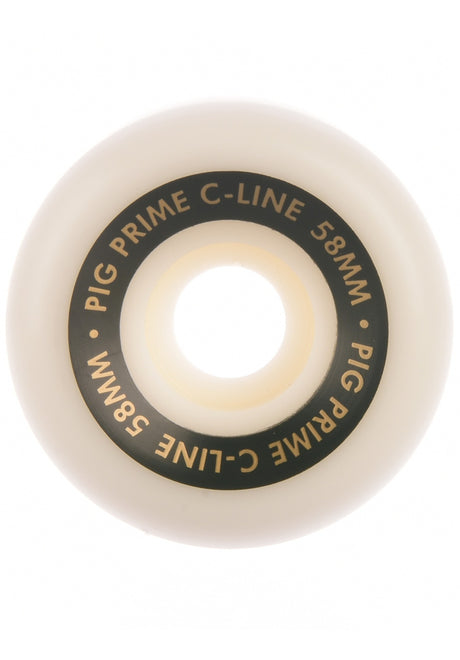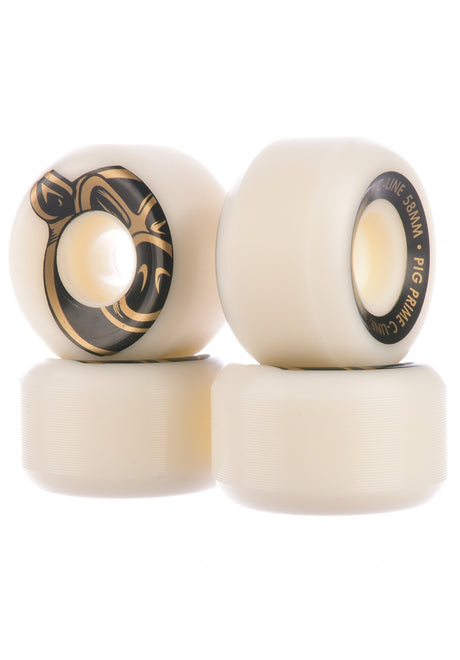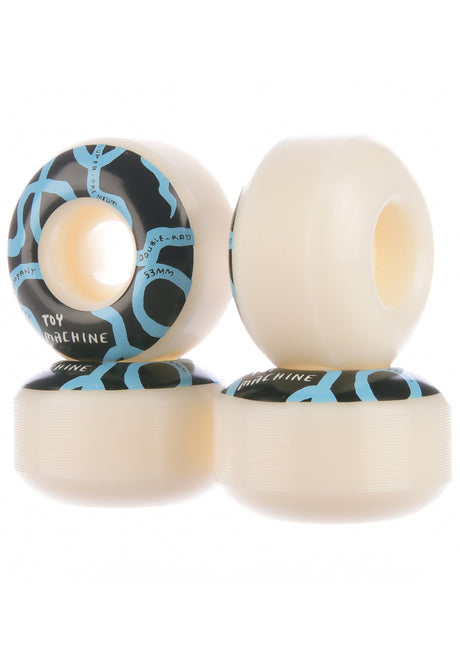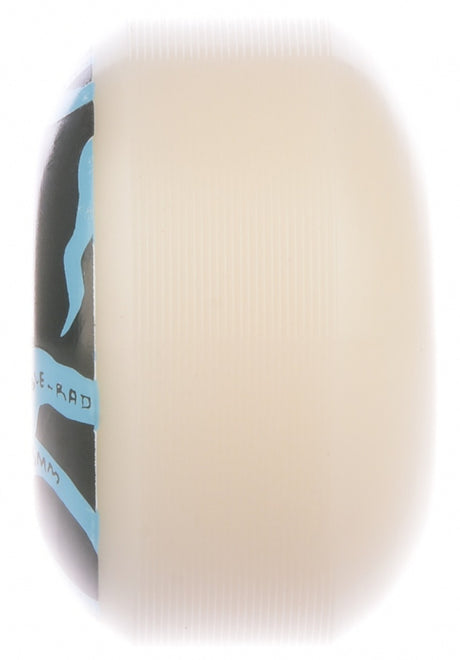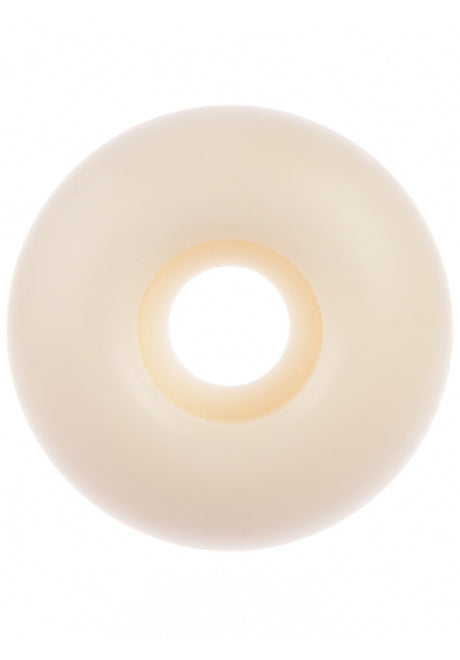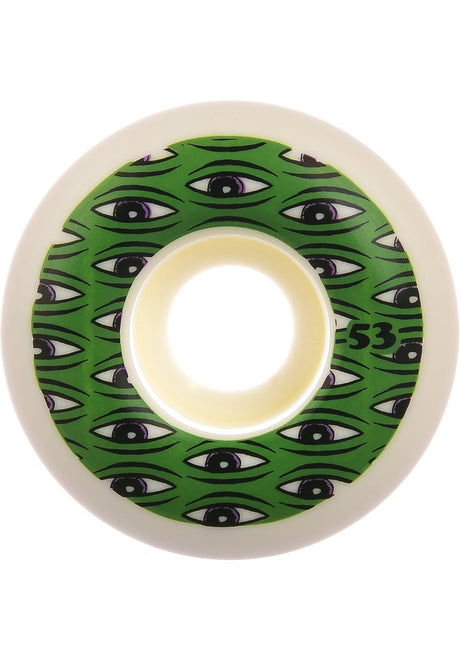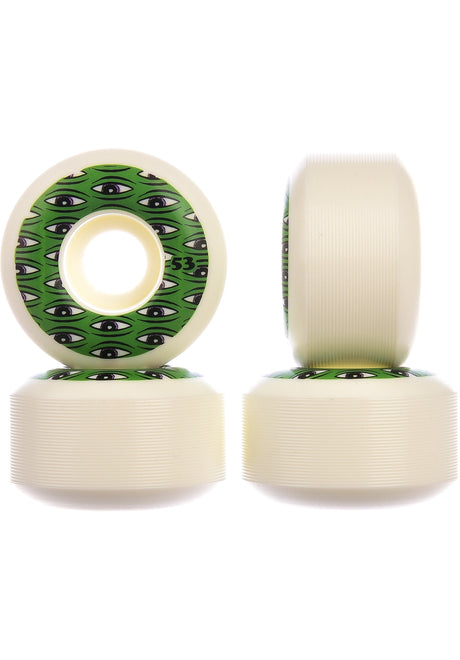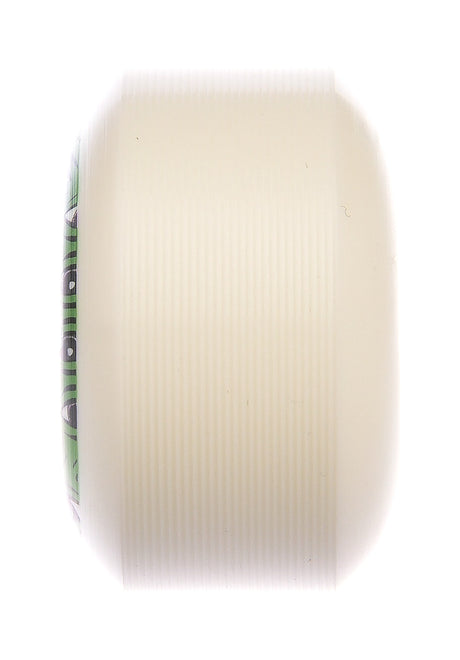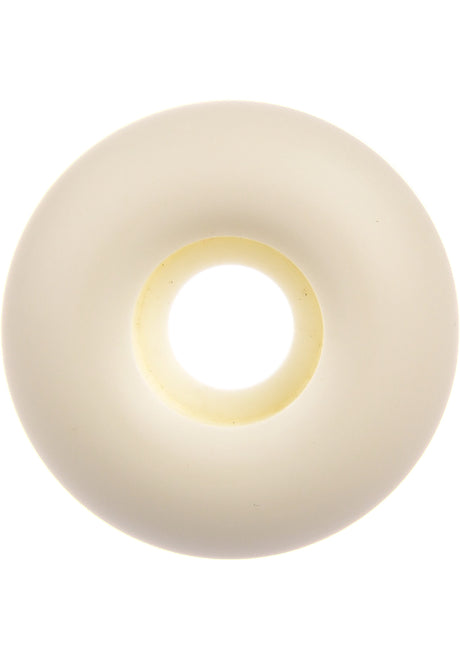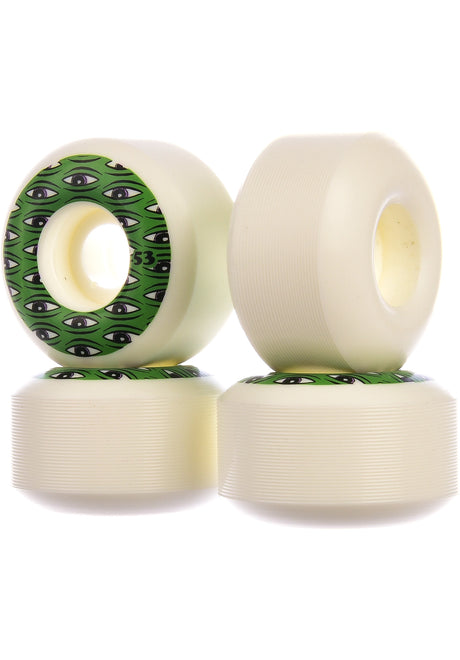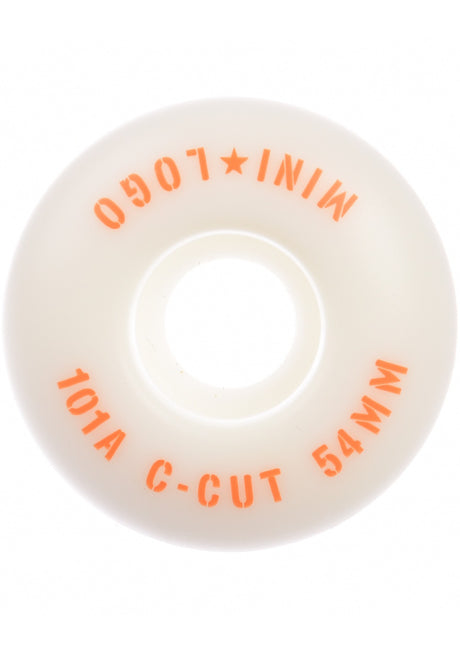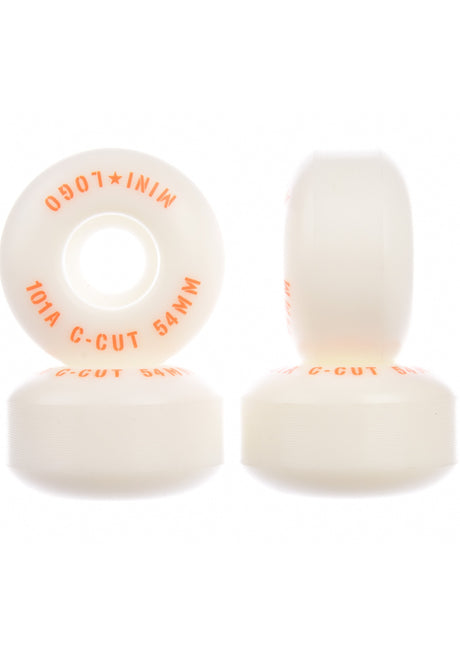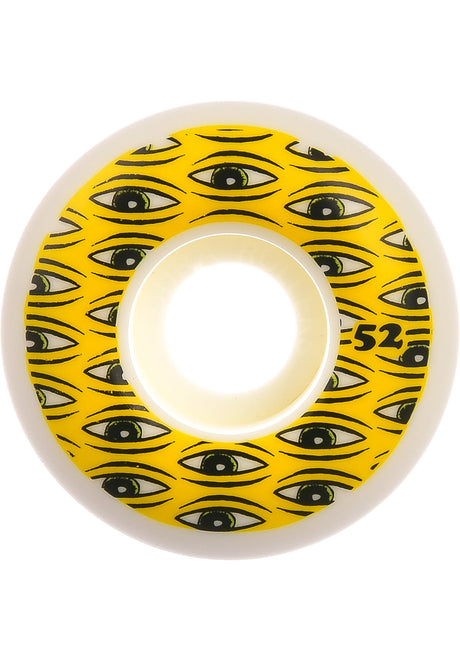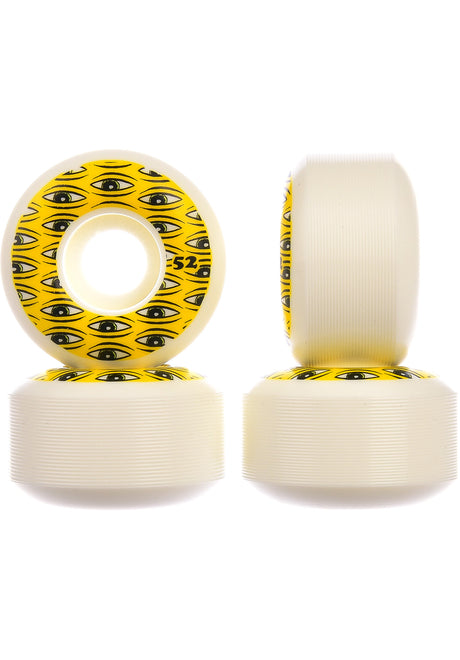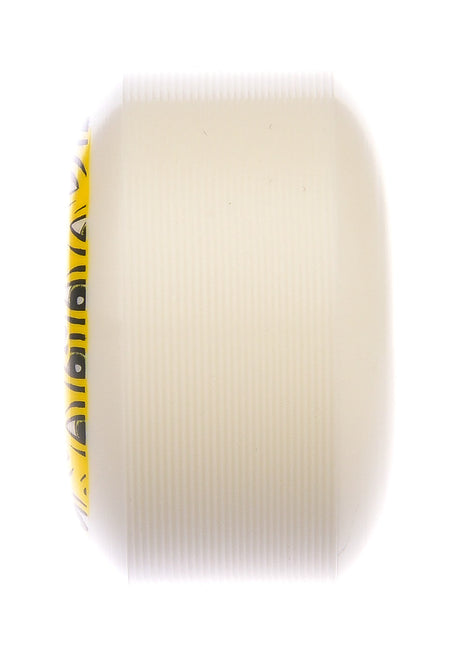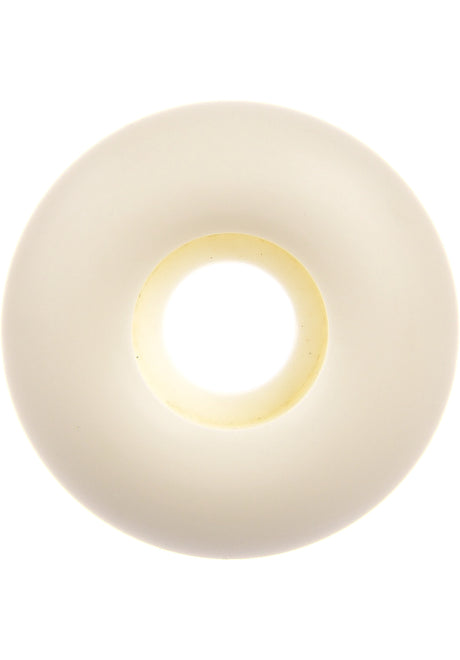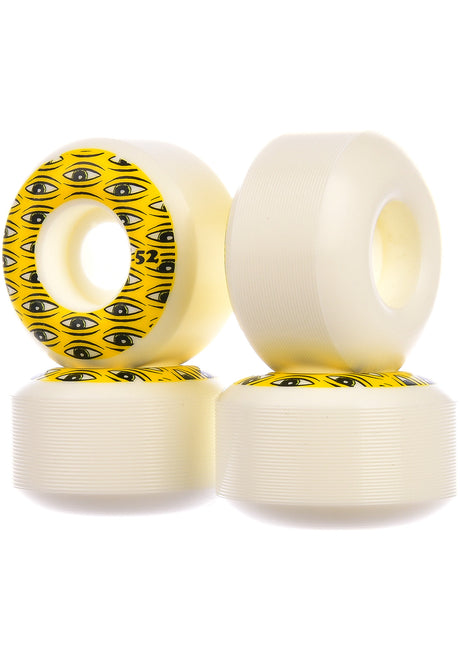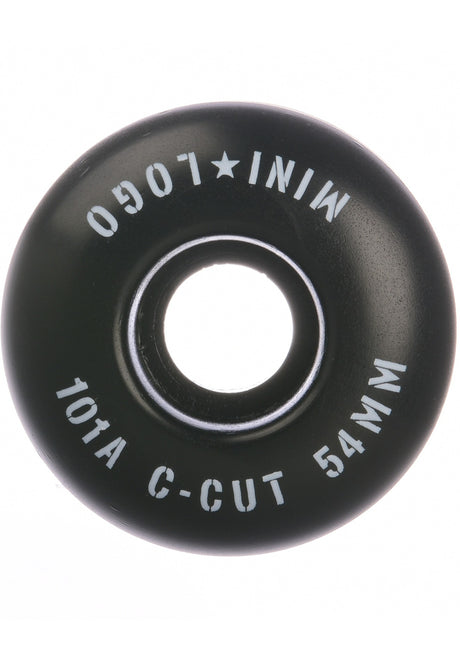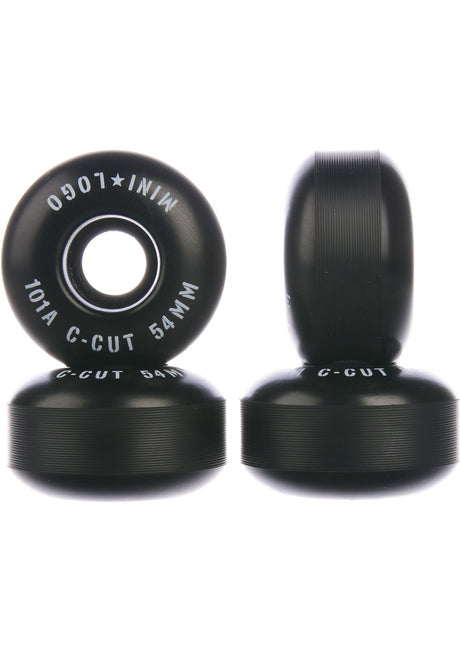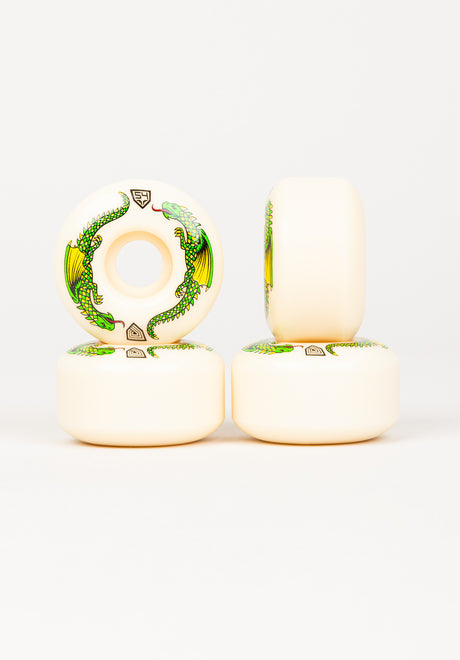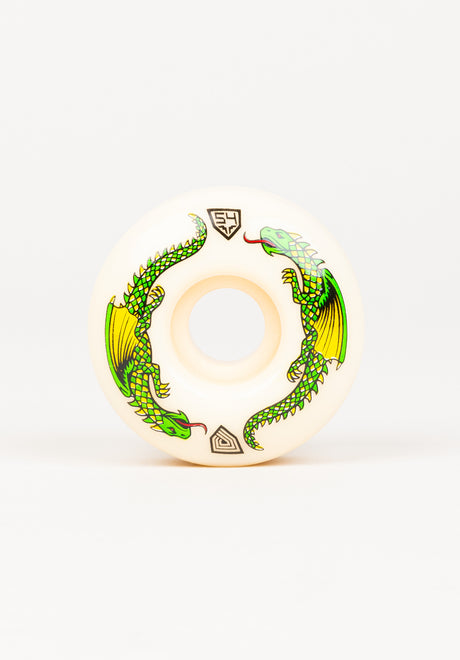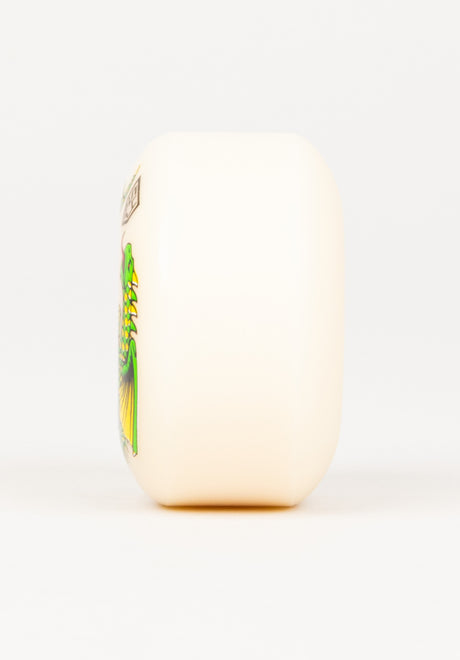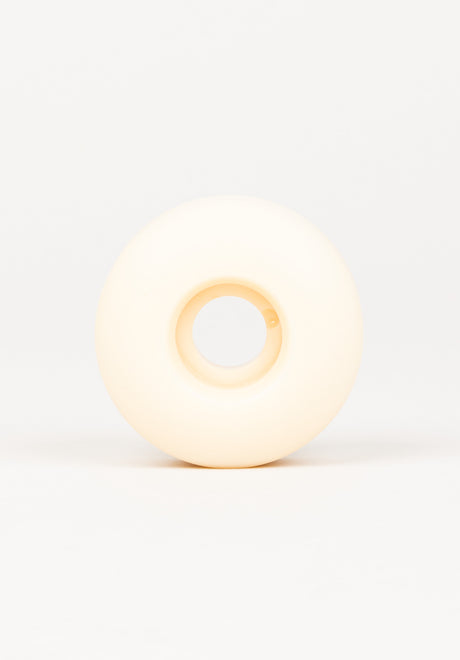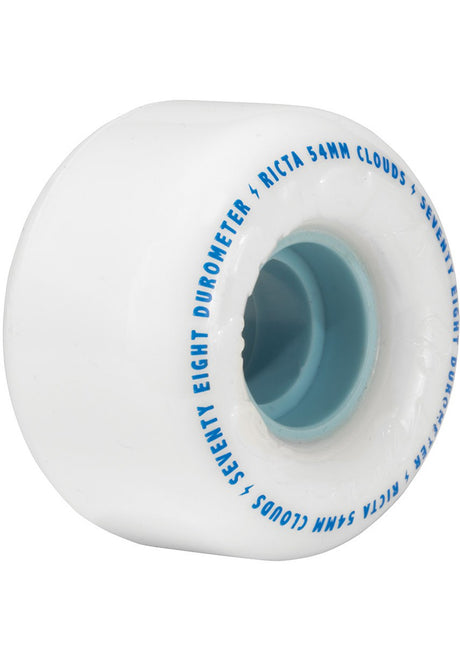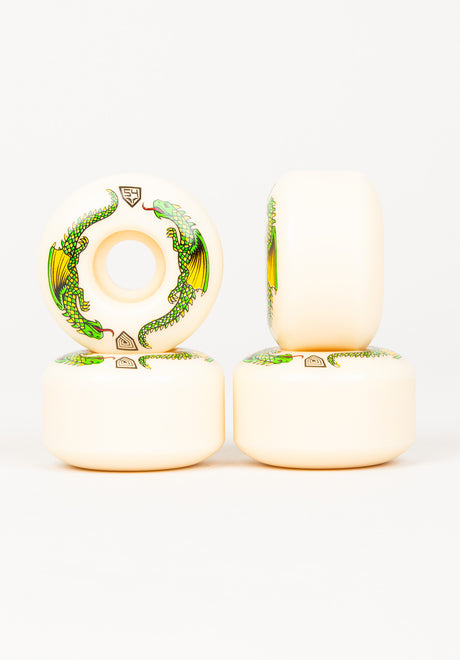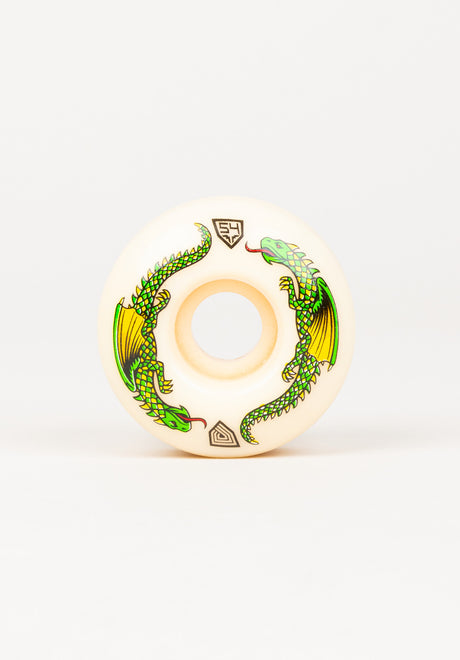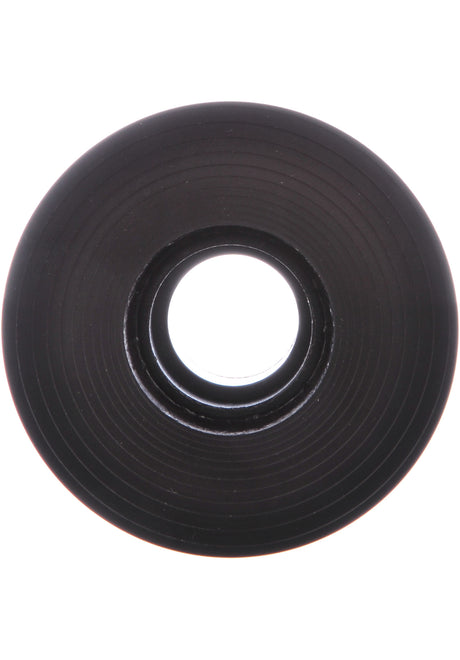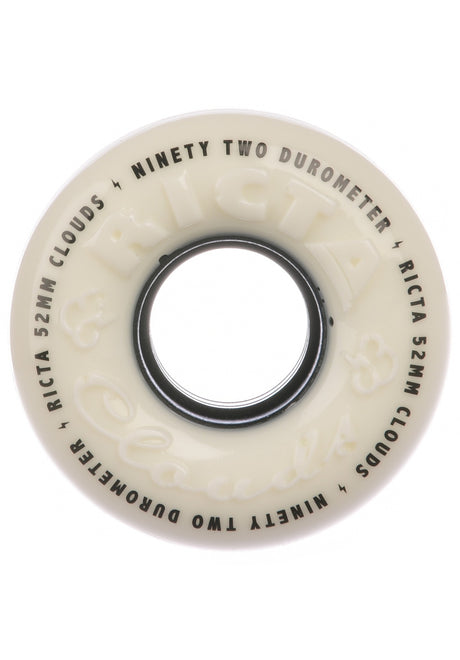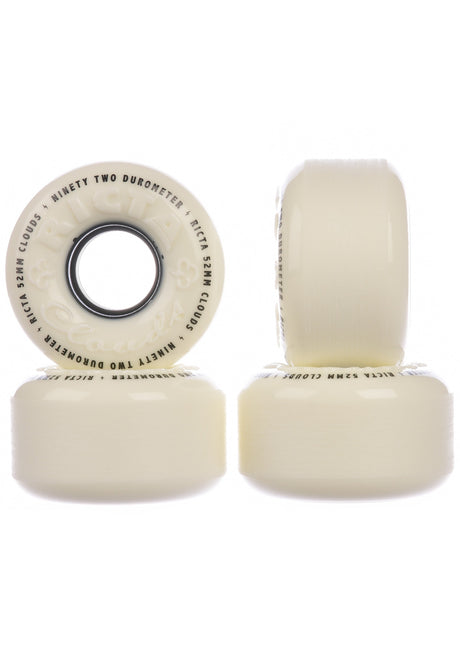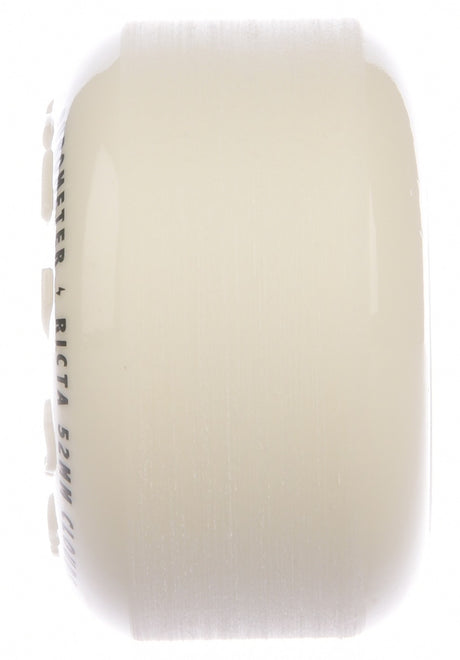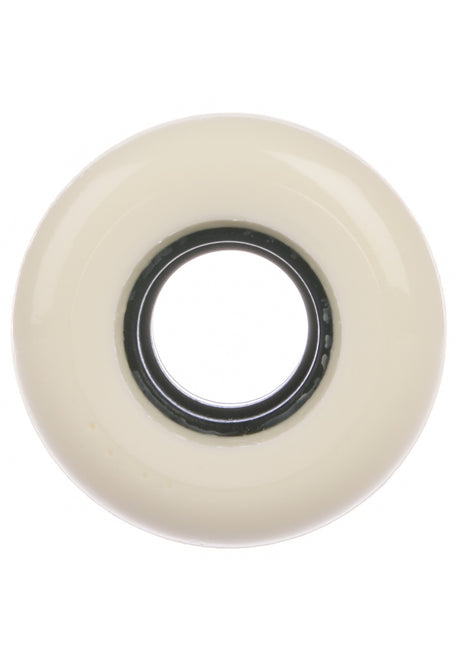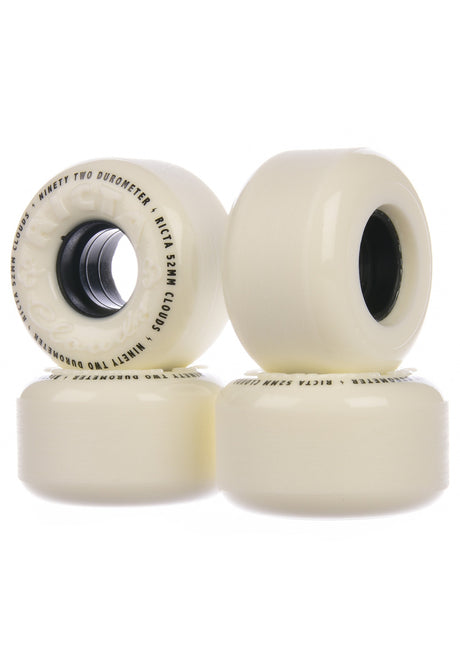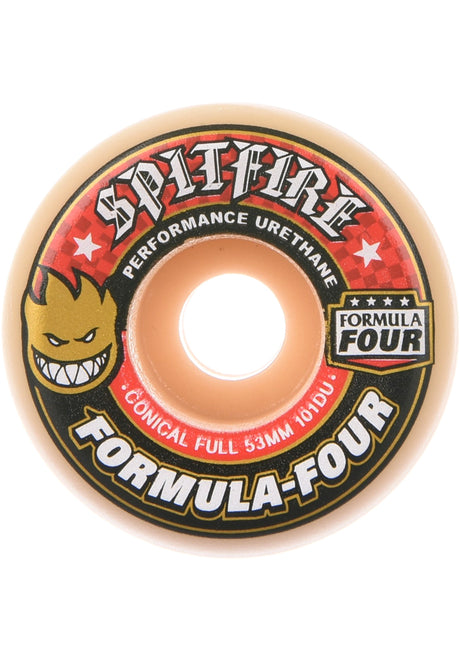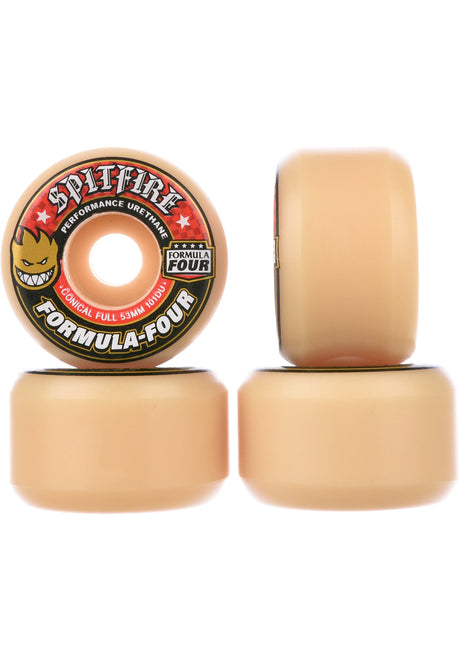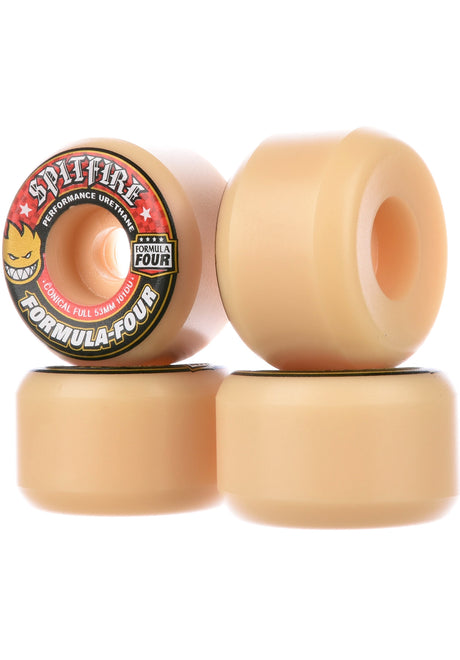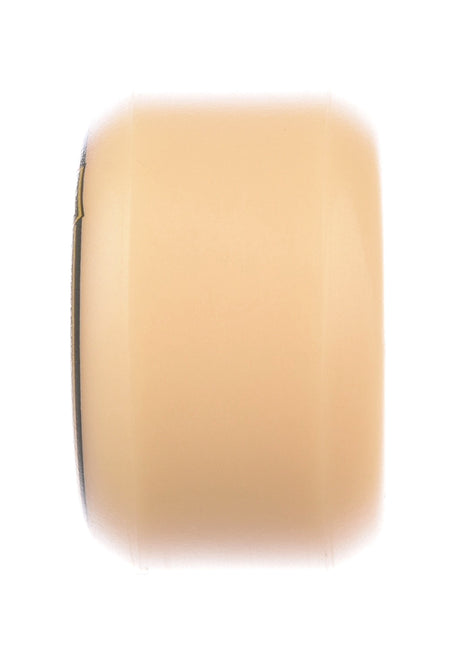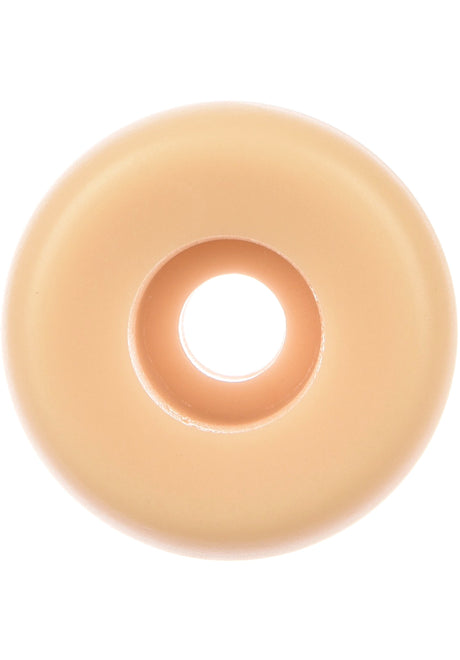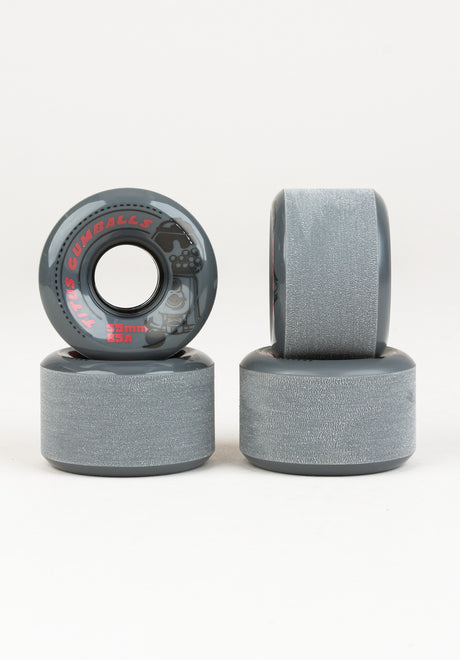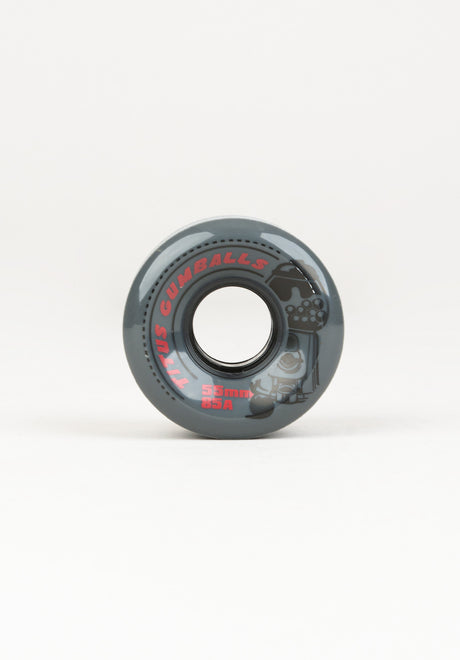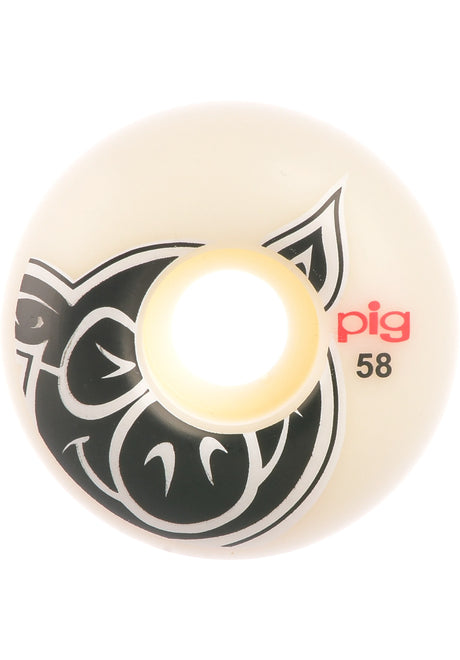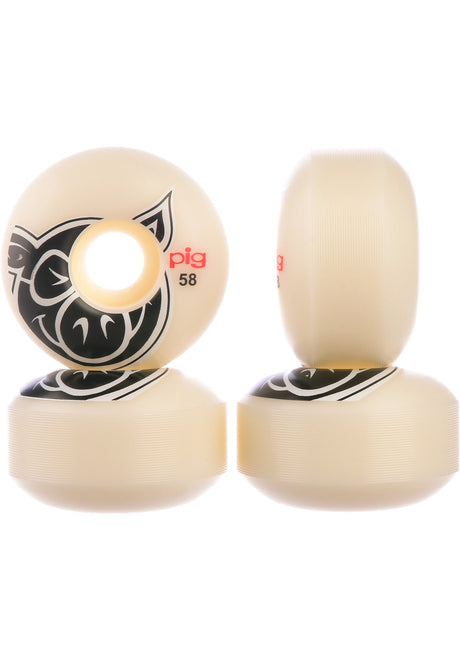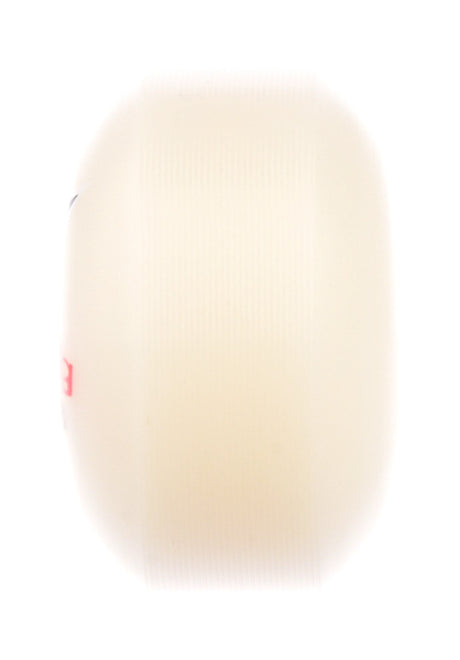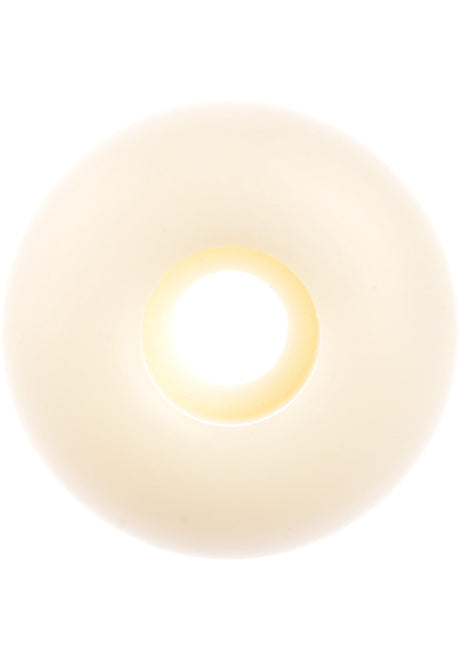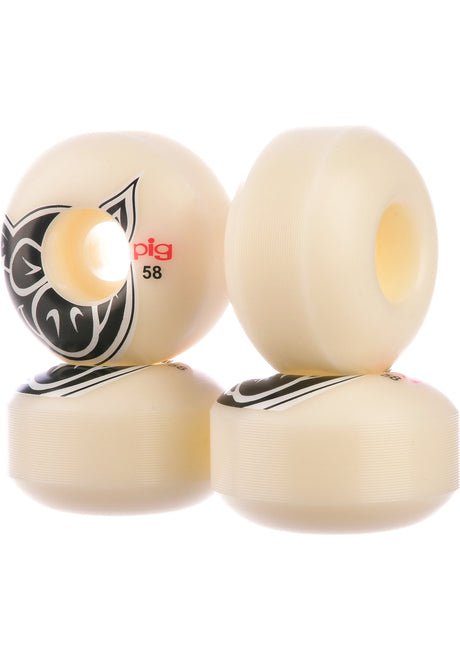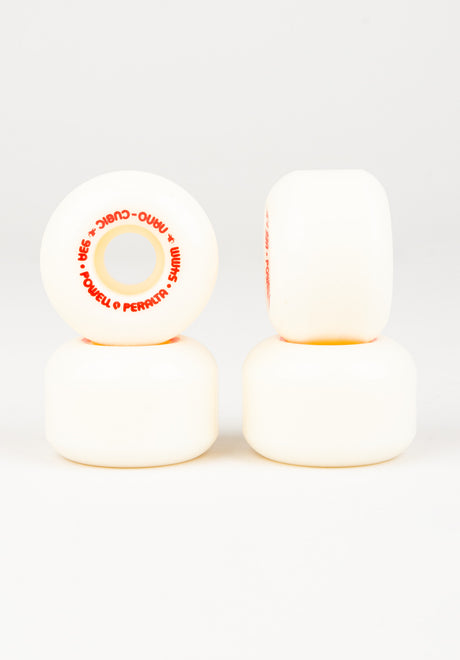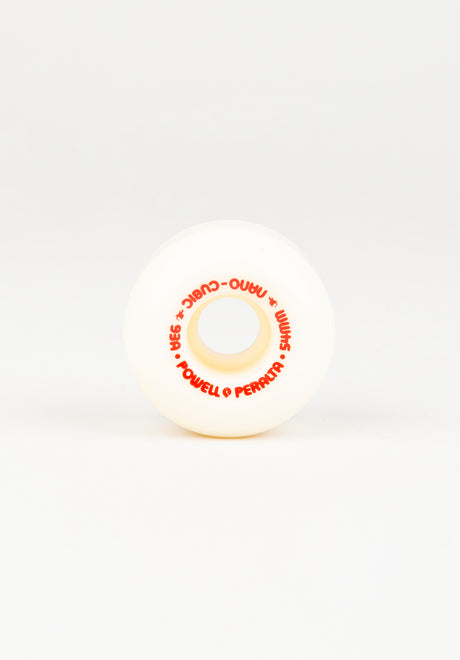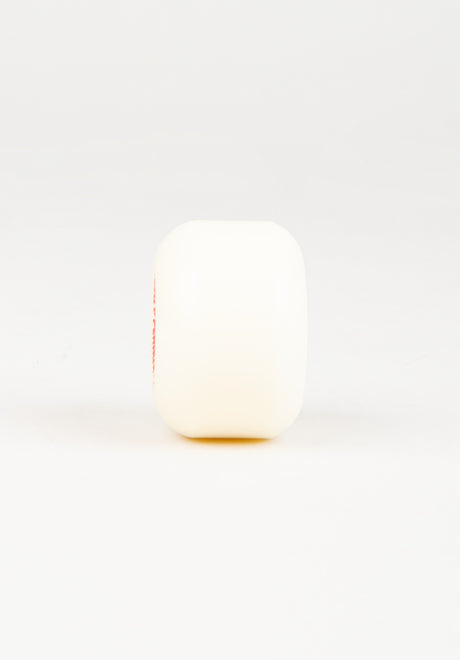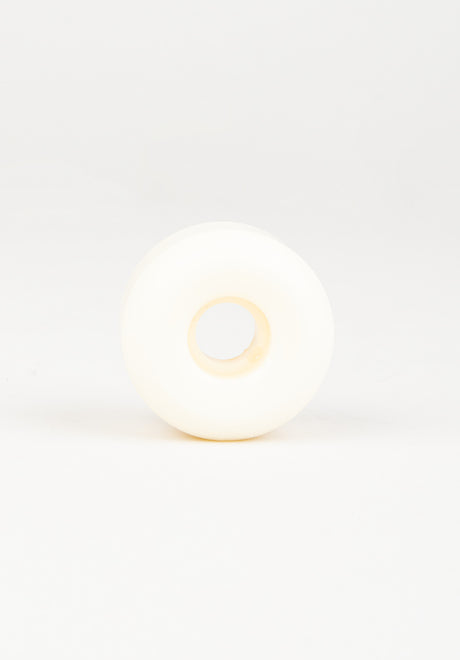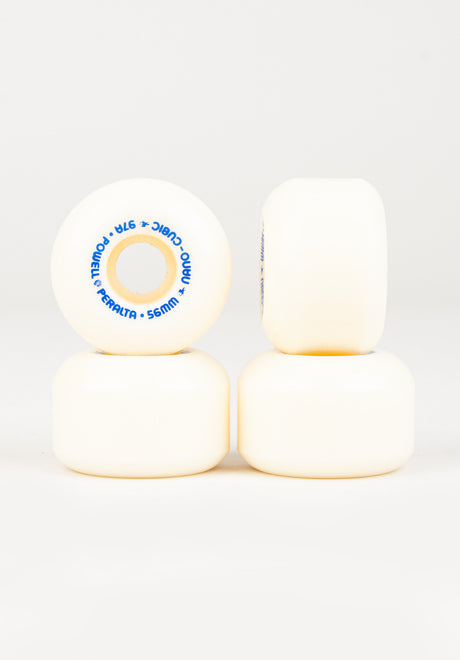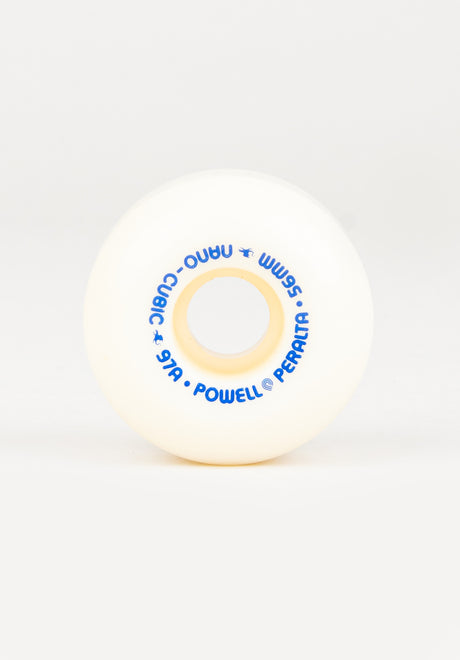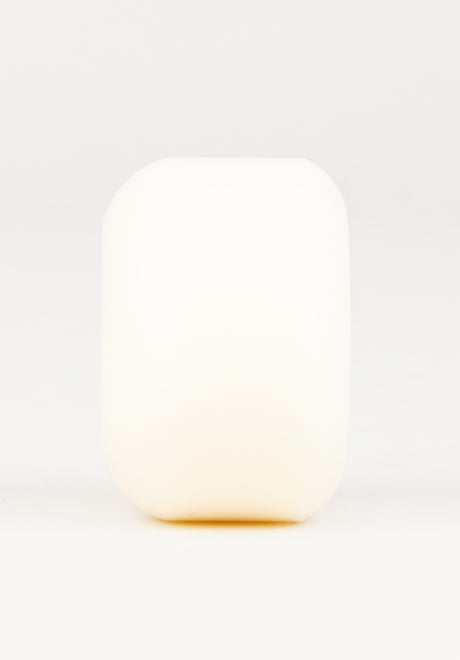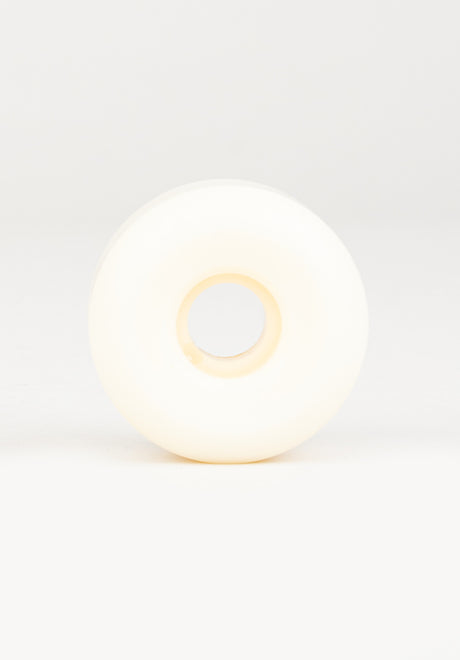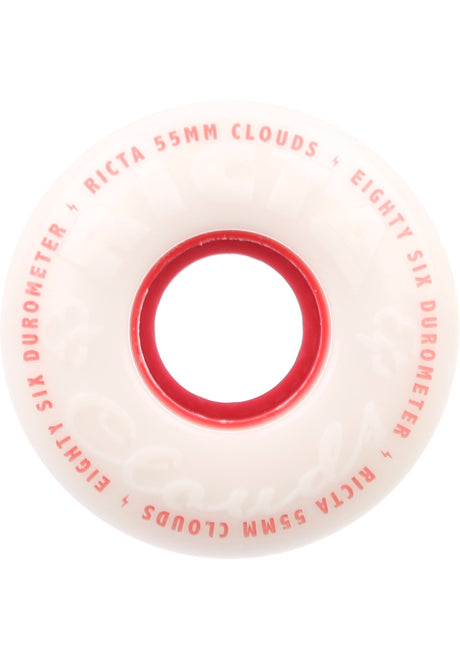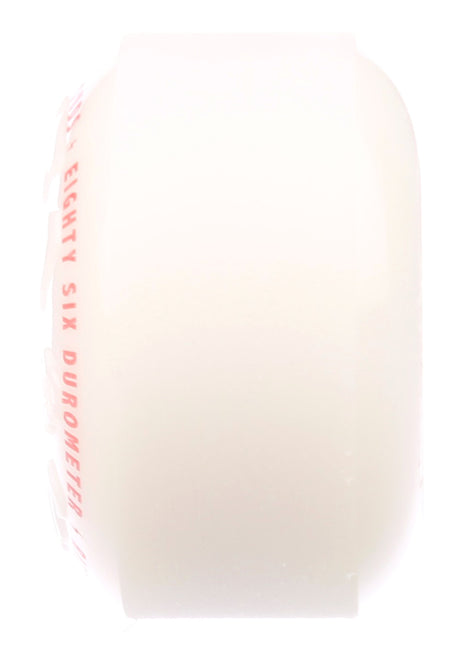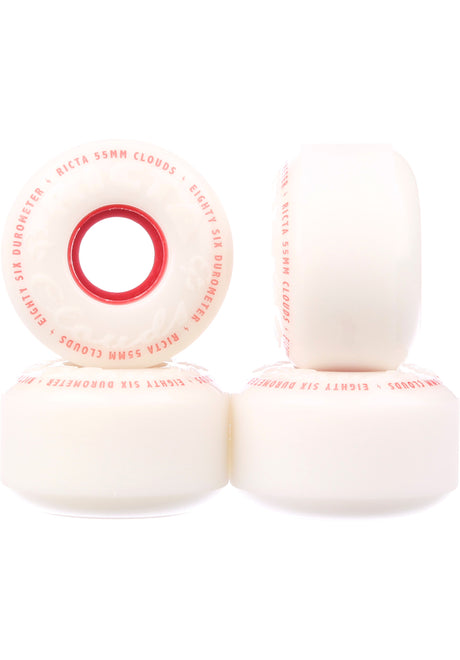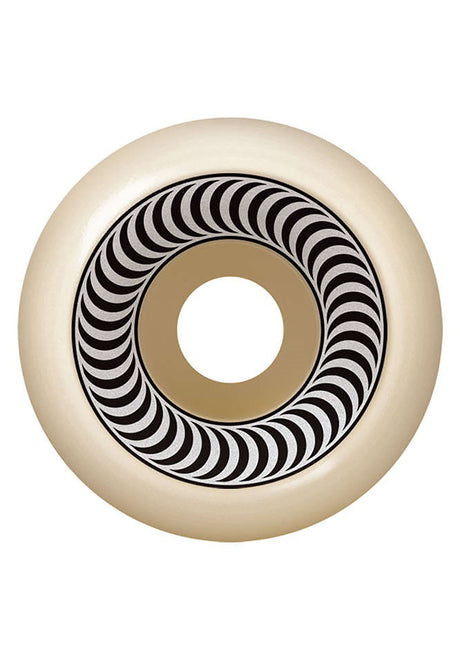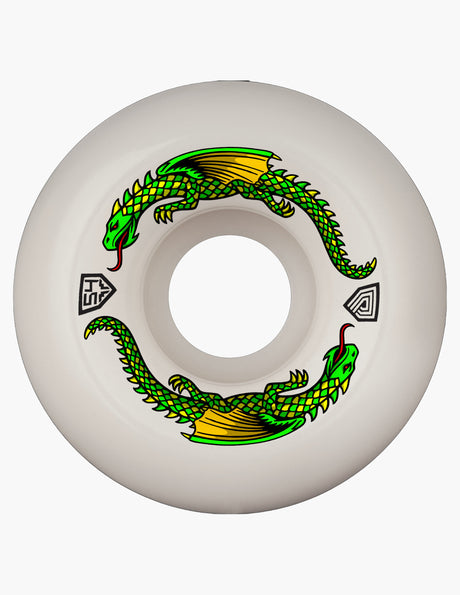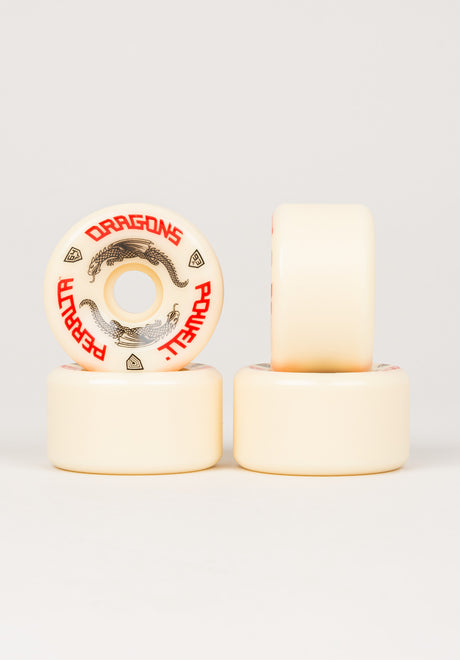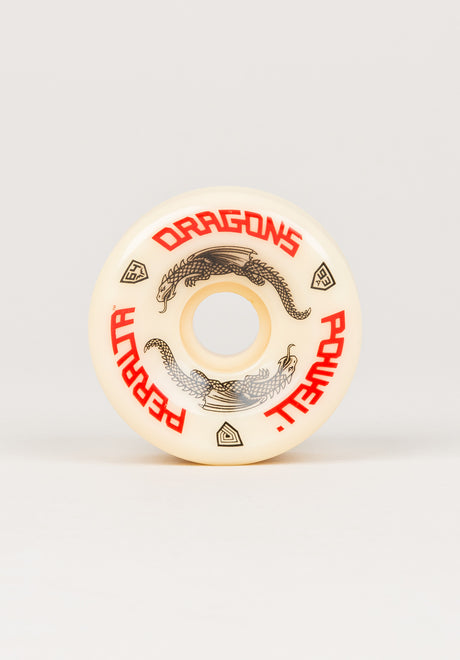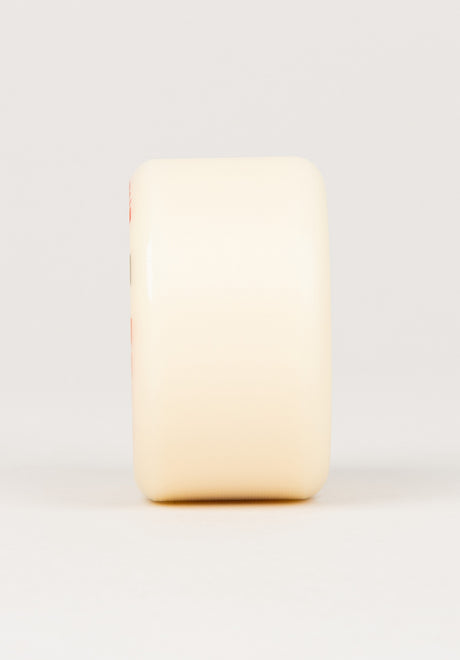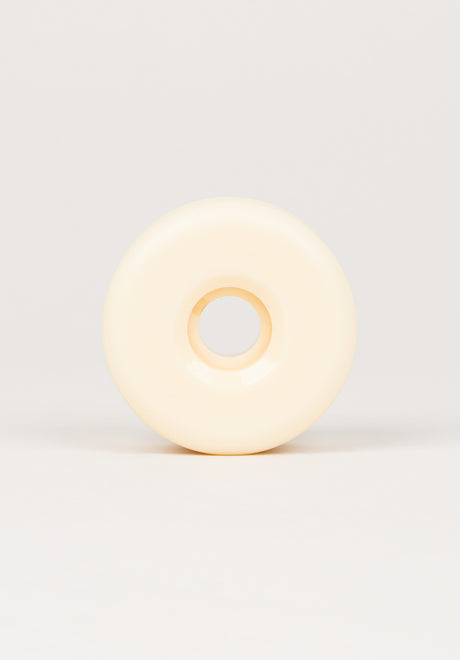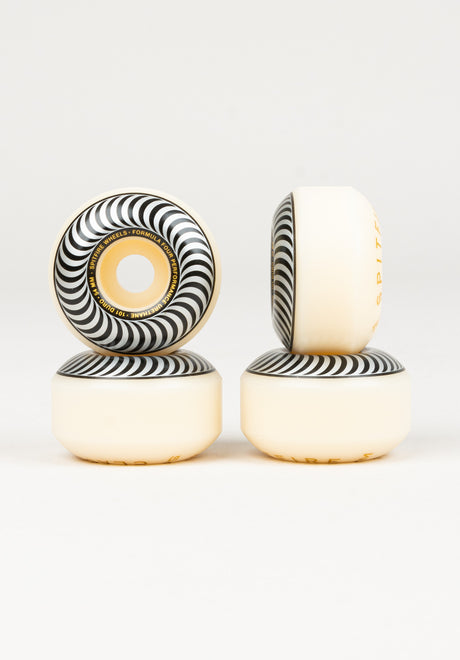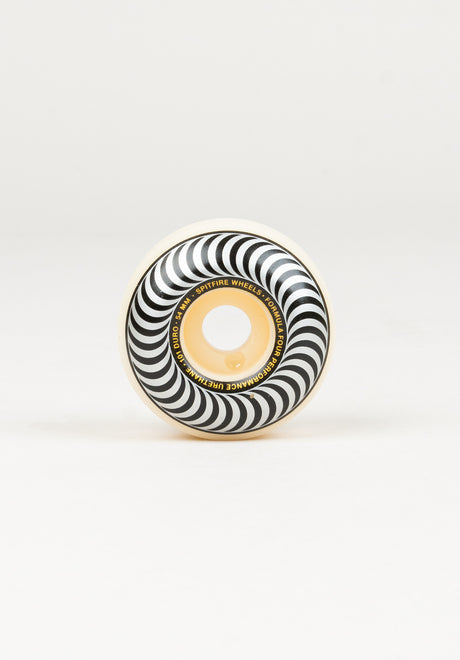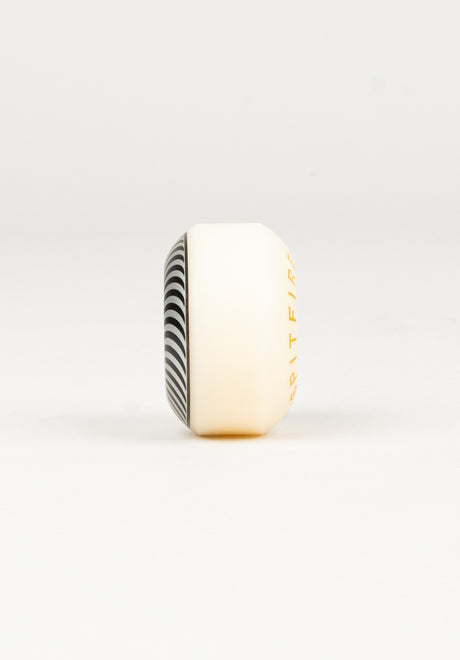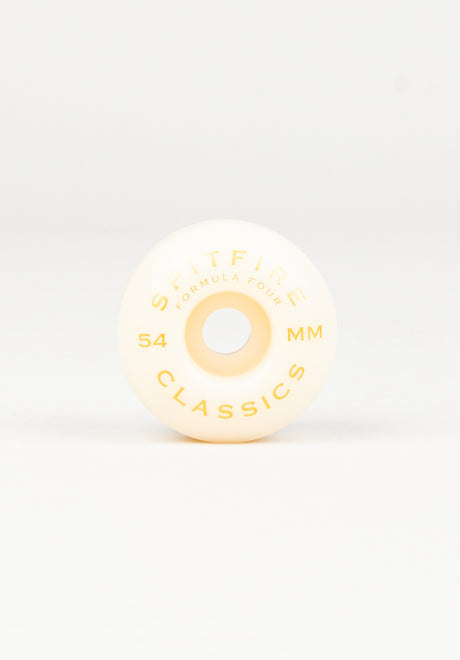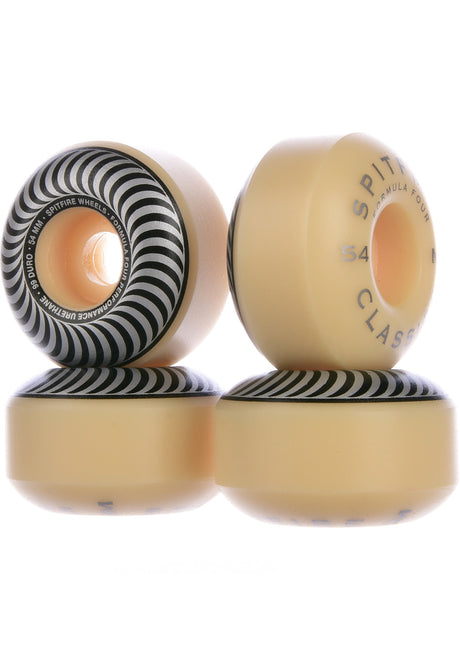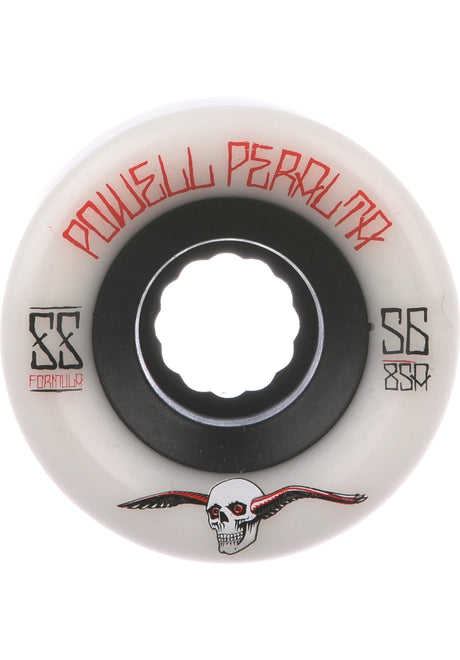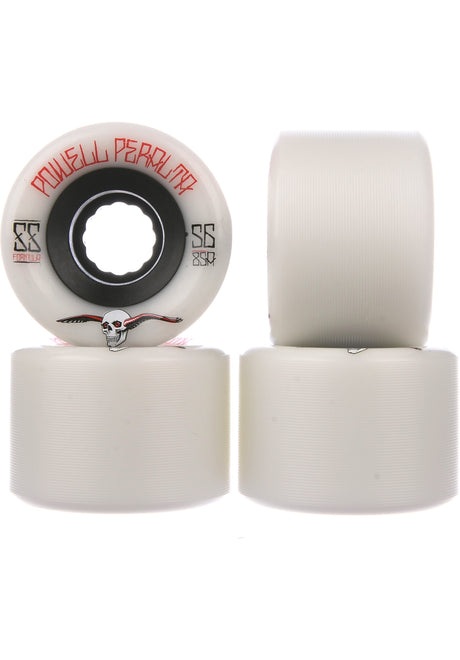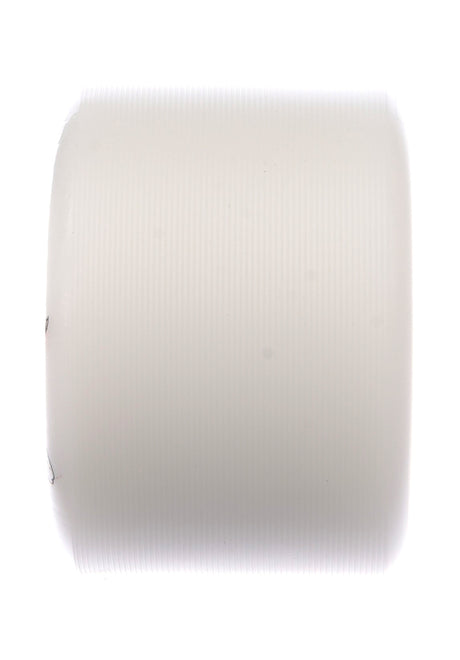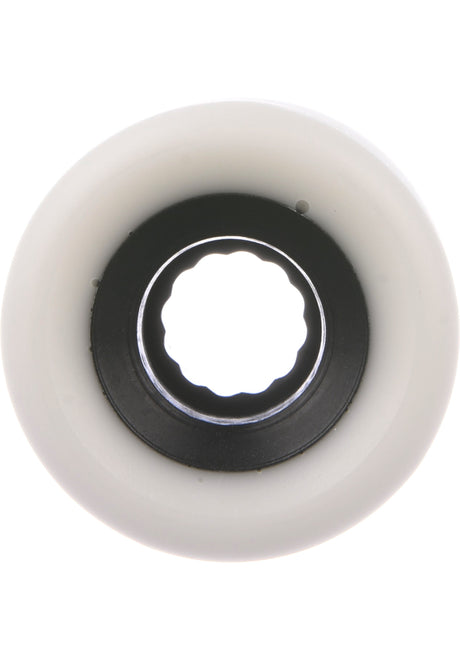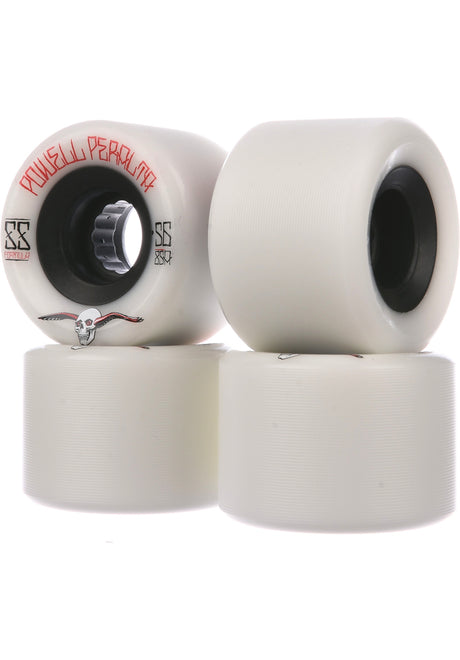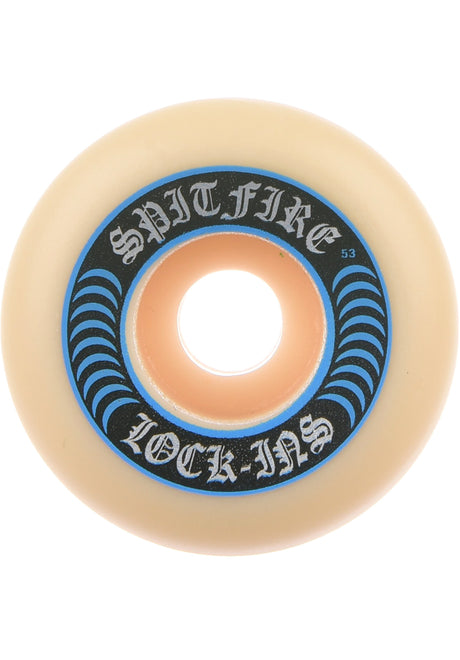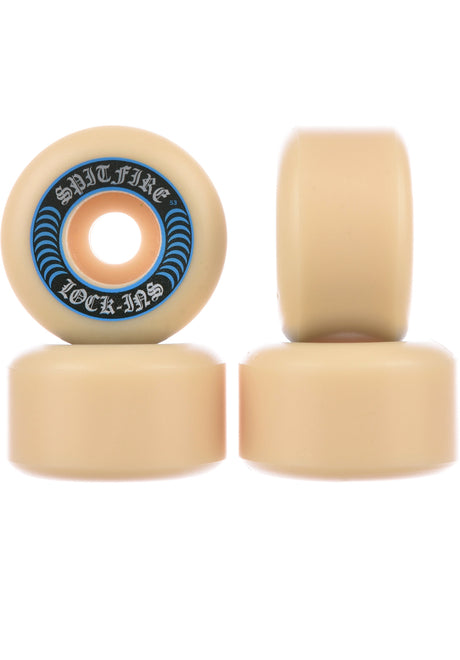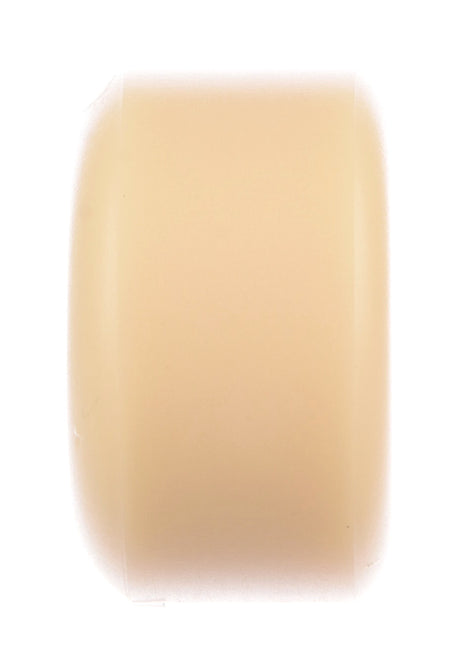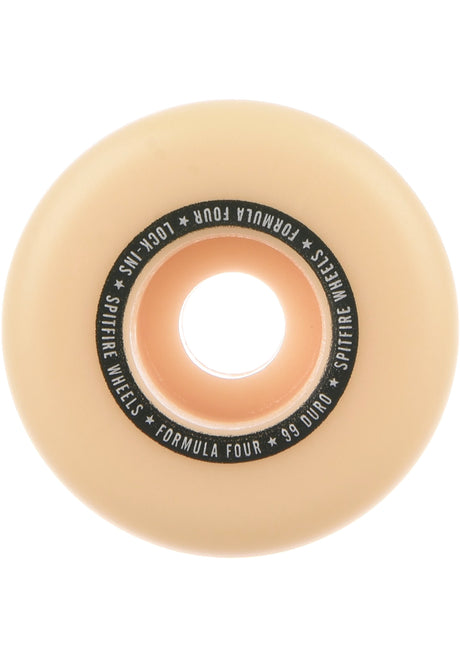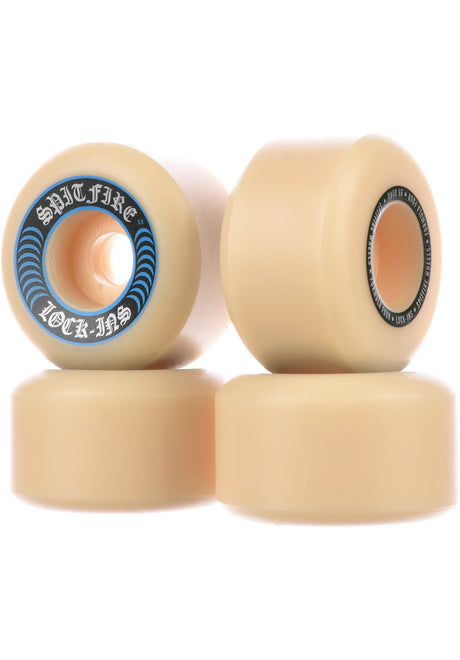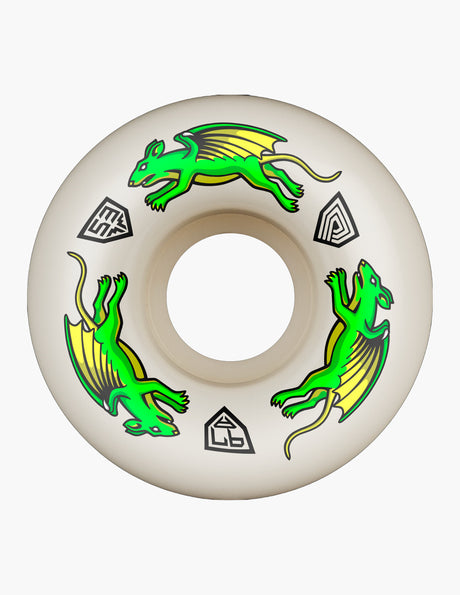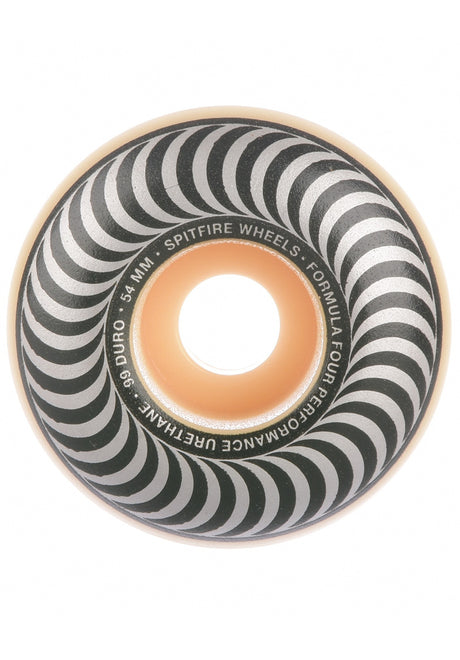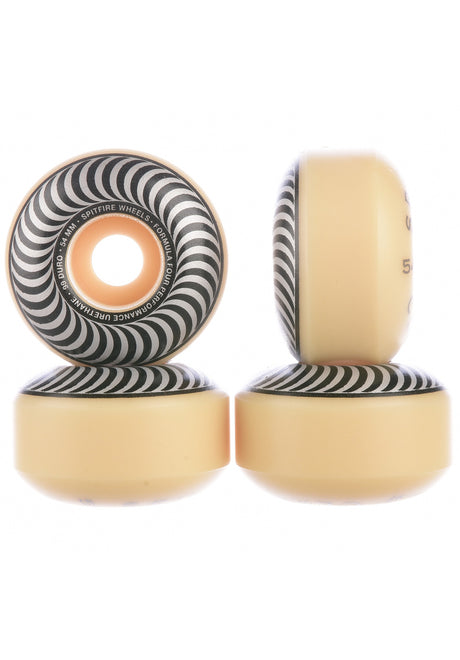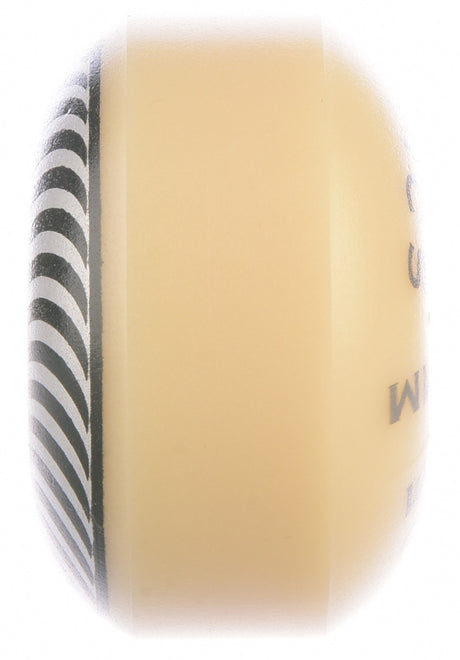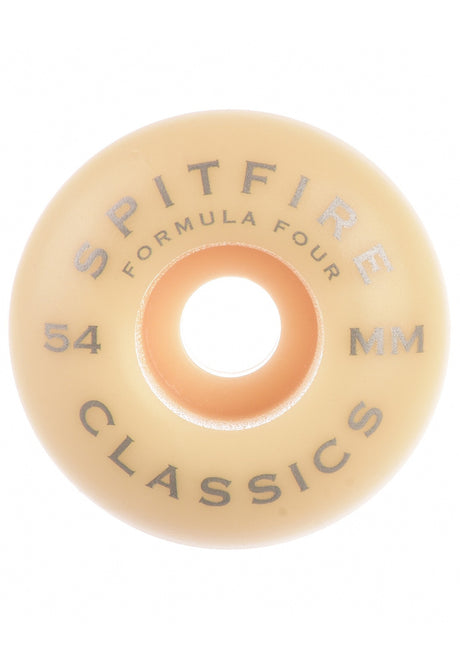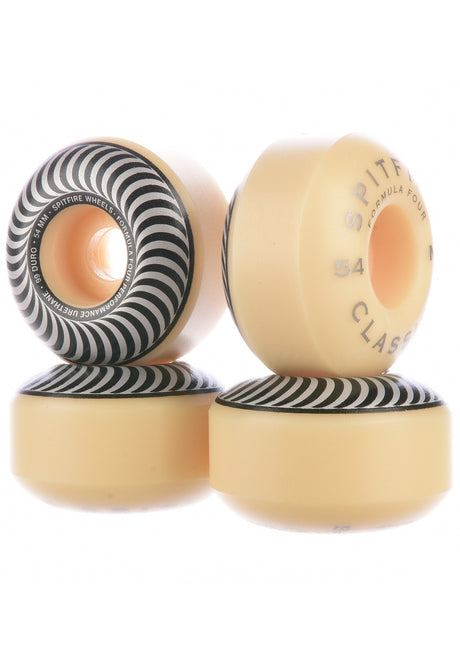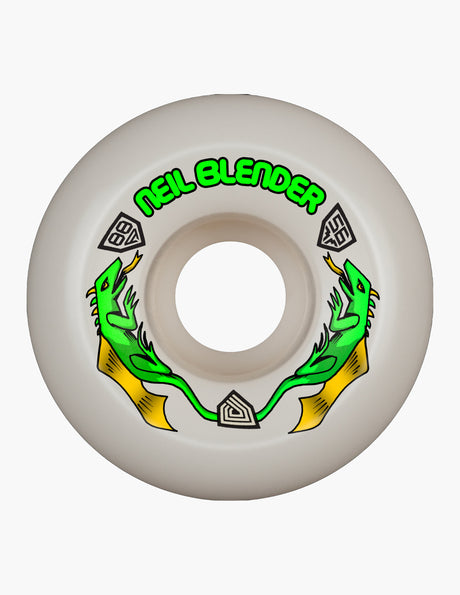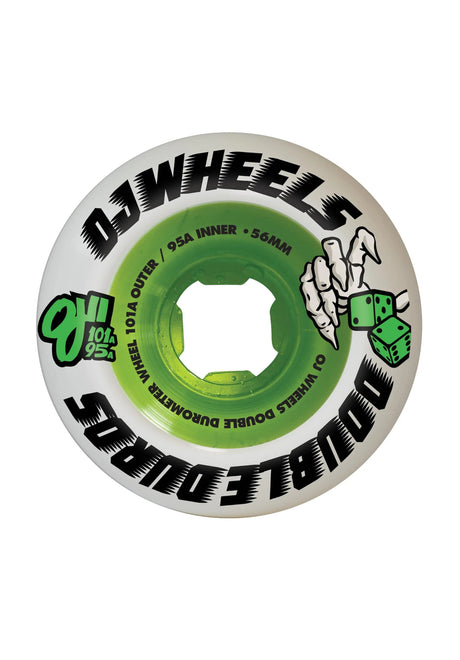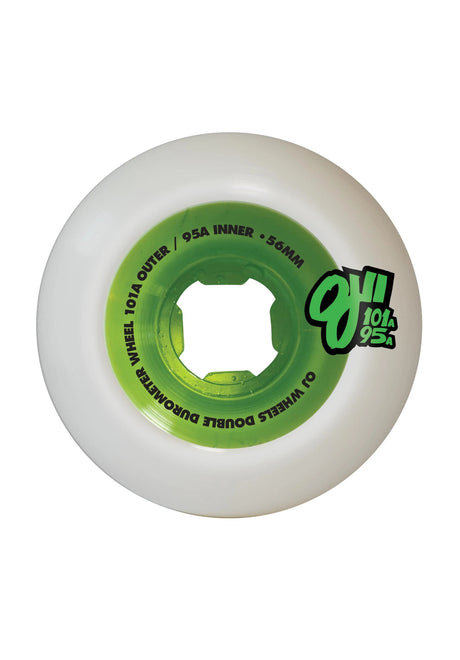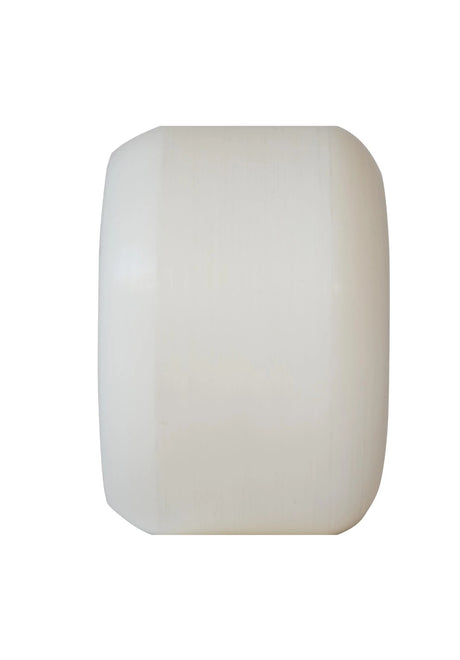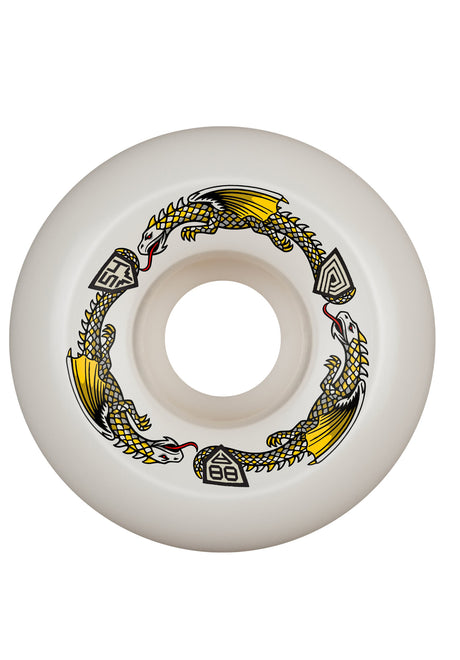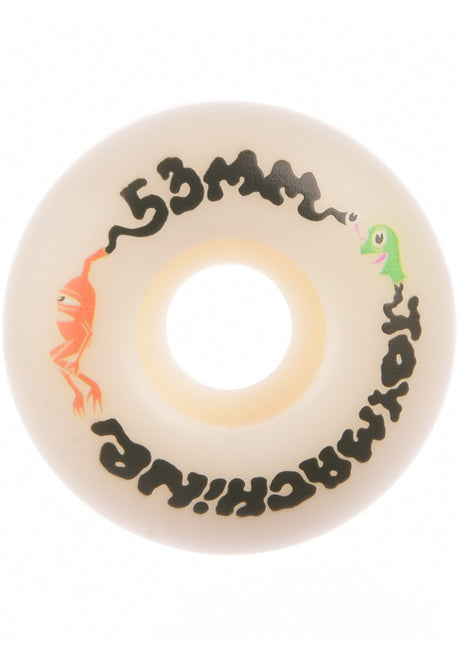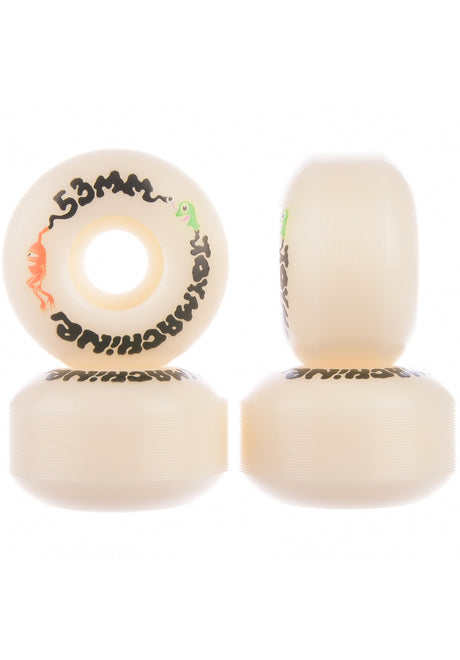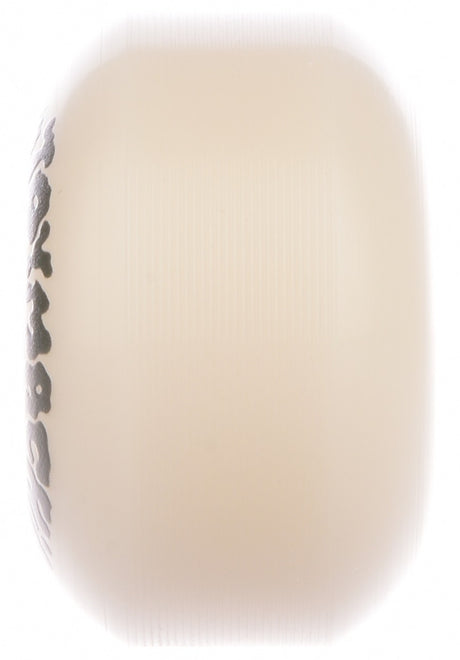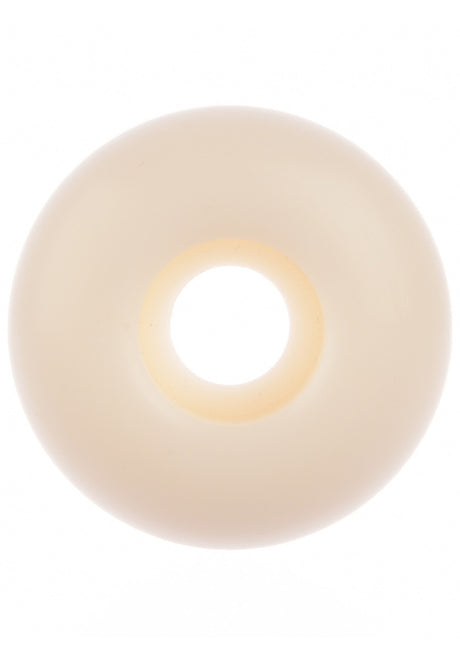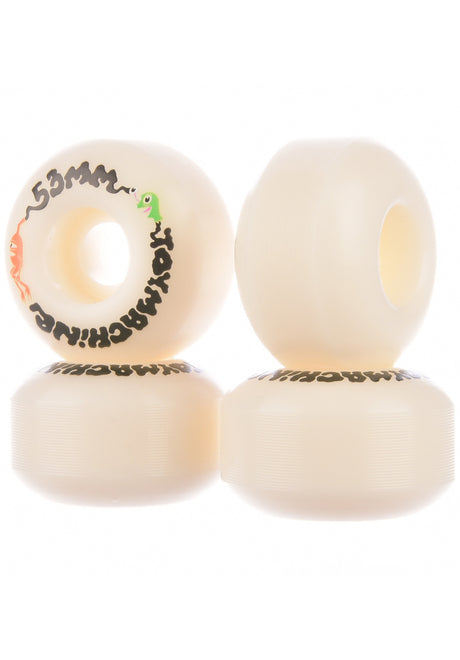Skateboard wheels that fit your style
Do you like to skate street, park, or ramps? Maybe you like to skate rough DIY-spots or you want a smooth ride for your cruiser skateboard? We have skateboard wheels for every skate terrain. The question is: What size and wheel hardness should your skateboard wheels have? Or: What is the difference between core and non-core wheels? In the Titus Online Skateshop, you’ll find answers to all your skate wheel questions so you can choose exactly what you need.
To make sure you find what you need, we have a huge selection of skateboard wheels in all conceivable sizes, shapes and durometers. You’ll find premium-quality skateboard wheels from brands like Bones Wheels. Find your next wheels in the Titus online shop!
Looking for longboard wheels? Check out our big selection of longboard wheels!
Which skateboard wheel size is best for me?
The size of your skateboard wheels can make a big difference in how your board skates. Therefore, you’ll need to choose a size, or, diameter that’s fitting to your preference.
For street skating, technical tricks are more common and therefore the overall weight of your board is more of a concern. You are also generally not going extremely fast, meaning smaller wheels are generally preferred by most street skaters. In this case, 54mm wheels or smaller are best suited for street skateboarding. However, keep in mind that the smaller your wheels are, the more you will feel sidewalk cracks (or rocks/pebbles) while skating.
If you’re the type of skater who likes to explore and take on any spot you can find, no matter how rough, you may want to consider a larger wheel. For a wheel that will skate rough, crusty spots but still be suitable for street tricks, look for something around the 56mm range. The bigger a wheel is, the easier it will roll over cracks and small pebbles such as what's found in ditches or it DIY-spots.
If you prefer the high-speed and smooth concrete that a skatepark or bowl can offer, we recommend 54mm wheels or larger. Bigger wheels will offer the speed and grip that’s needed for transition/ramp skating.
If you like to skate everything and simply want to stay prepared for it all, we recommend wheels between 53mm and 56mm. A good compromise for both street or park skating.
To outfit your cruiser skateboard, you’ll want a wheel that offers a smooth and comfortable ride, even on rougher streets. In this case, it’s best to go for a wheel that’s 56mm or larger.
Hard or soft Skateboard wheels?
Equally important as the size of your wheels is their hardness. This is technically referred to as “durometer”. Durometer is measured on an A and B scale. What you need to know about this is that the A scale is really only accurate until 100A (a hard wheel). Then, the B scale will give a more accurate representation of hardness (referring to very hard wheels). 100A wheels are identical to 80B wheels (101A = 81B). You will find skateboard wheels from a very soft 78A to an extremely hard 84B.
Similar to choosing the correct size of your wheels, the correct hardness for you depends on the style of skateboarding you like to do. Basically, what you need to know is that hard wheels are faster and slide more easily. Soft wheels are smooth and comfortable but very grippy and slower when taking off. Therefore, as a street skater, slide-ability is necessary for tricks such as nose and tailslides where the wheels come in contact with the obstacle or for powerslides. When skating perfectly smooth surfaces like a skatepark, hard wheels will also offer more speed.
Soft wheels, generally between 78A and around 92A, are ideal for longboards, cruisers, or for skating very rough places. You sacrifice the slide-ability of a harder wheel which is necessary for some tricks, but you get a smoother ride that can glide over sidewalk cracks, small rocks, etc. Softer wheels are also ideal for filmer skateboards as they are smoother and more quiet in the background of a video clip.
For street and skatepark skating, it’s best to choose a wheel durometer of 98A or higher. For beginners, 98A is best as it will offer slightly more grip. 101A is a common durometer for street skating and very hard alternatives such as 83B are great for smooth street or skatepark skating.
How does wheel width affect skate performance?
The width of your wheel and the “contact patch” that it has with the ground will affect the grip of the wheel. Wider wheels offer more grip, resulting in improved control and stability. A thinner wheel can offer reduced weight as well as more slide-ability. When you do tricks such as nose and tailslides, a wider wheel will have more surface to grip the obstacle and slow you down. However, wider wheels can also offer more control when doing tricks like powerslides. You must decide which width is more suitable to your personal style of skateboarding.
What Material are Skateboard wheels made of?
Skateboard wheels are manufactured using polyurethane. However, not all polyurethane is created equal. Two wheels with an identical shape and the same durometer may be produced from a different mixture of polyurethane. Each manufacturer has their own polyurethane mixture. Moreso, many brands offer different quality levels of polyurethane in their product lines. For example, most brands will have a “standard” urethane as well as a more expensive “performance” urethane. Generally, you are simply paying for a longer lasting wheel or improved flat-spot resistance with more expensive models.
A great example of “performance” urethane options are those from market leader Bones Wheels. Bones offers their Street Tech Formula and Skatepark Formula wheels in addition to cheaper, standard quality wheels. STF wheels promise extreme flat-spot resistance as well as great, controlled slide-ability. SPF wheels are built for maximum speed on smooth skatepark surfaces such as bowls or ramps.
Core vs. Non-Core Skateboard wheels
Non-Core wheels are completely made out of polyurethane. They are sometimes also referred to as classic wheels, emphasizing the fact that they are the standard design. Your bearings will simply be pressed into the center of the wheels, which is no issue when the wheels have a hard urethane durometer.
Core wheels feature a hard plastic “core” insert in the center of the wheel. This can reduce the weight of the wheel as well as create a stable place for your bearings to sit if the outer urethane is very soft.
How can I avoid “wheelbite”?
Wheelbite occurs when your wheels come in contact with your deck, causing the wheels to brake to a stop while you’re skating. This generally occurs during hard turns when all your weight is on one side or during impact when landing off a drop. How loose you have your skateboard trucks adjusted will affect this. However, you must also have the correct size wheels to suit your skateboard set-up. For example, large wheels (56mm and up) will not be suitable for “low” trucks.
If you have a suitable truck height (trucks come in low, medium, or high), the trucks are properly adjusted, and you’re still getting wheelbite, riserpads can increase the space between your wheels and deck.
Tips and tricks for Sakteboard wheel assembly
Before you can mount wheels on your trucks, you’ll have to install skateboard bearings. Bearings are inserted on each side of every wheel. This can be done by placing a bearing on a truck axle and then putting a wheel over the bearing and applying direct downward pressure. This will press the bearing into the wheel, just be sure that the outer shield of the bearing is facing outwards. Repeat for all four wheels.
Before securing the wheels with the outer axle nut, be sure that you have speed rings in place between the inner truck hanger and axle nut when the wheels are mounted on the axle. It’s important to tighten the axle nut only enough to hold the wheels in place, but so that they can still roll freely. Tightening the axle nut too far can damage the bearings.
You can watch a complete skateboard assembly and many other skateboarding tips and tricks on the Titus YouTube channel!
